I wasn’t sure what to expect from the bright blue 2023 Hyundai Elantra N parked in my driveway. I put it directly next to my personal Sonic Gray 2019 Honda Civic Type R and stared at the two, wondering if my time with the Elantra would make me regret my purchase. I knew it would be brilliant. But I wasn’t prepared for just how good it would be.
All it took was one corner. The Elantra N came alive, carved a line at a gentle yaw, and made me feel involved in every step despite the high-end hardware and electronic tricks murmuring away in the background. Then another, and another, and another corner until I found myself at the top of the mountain, completely and utterly involved in the sensation of driving.
Folks, we have a masterpiece on our hands. And for thousands of dollars less than its very capable peers.
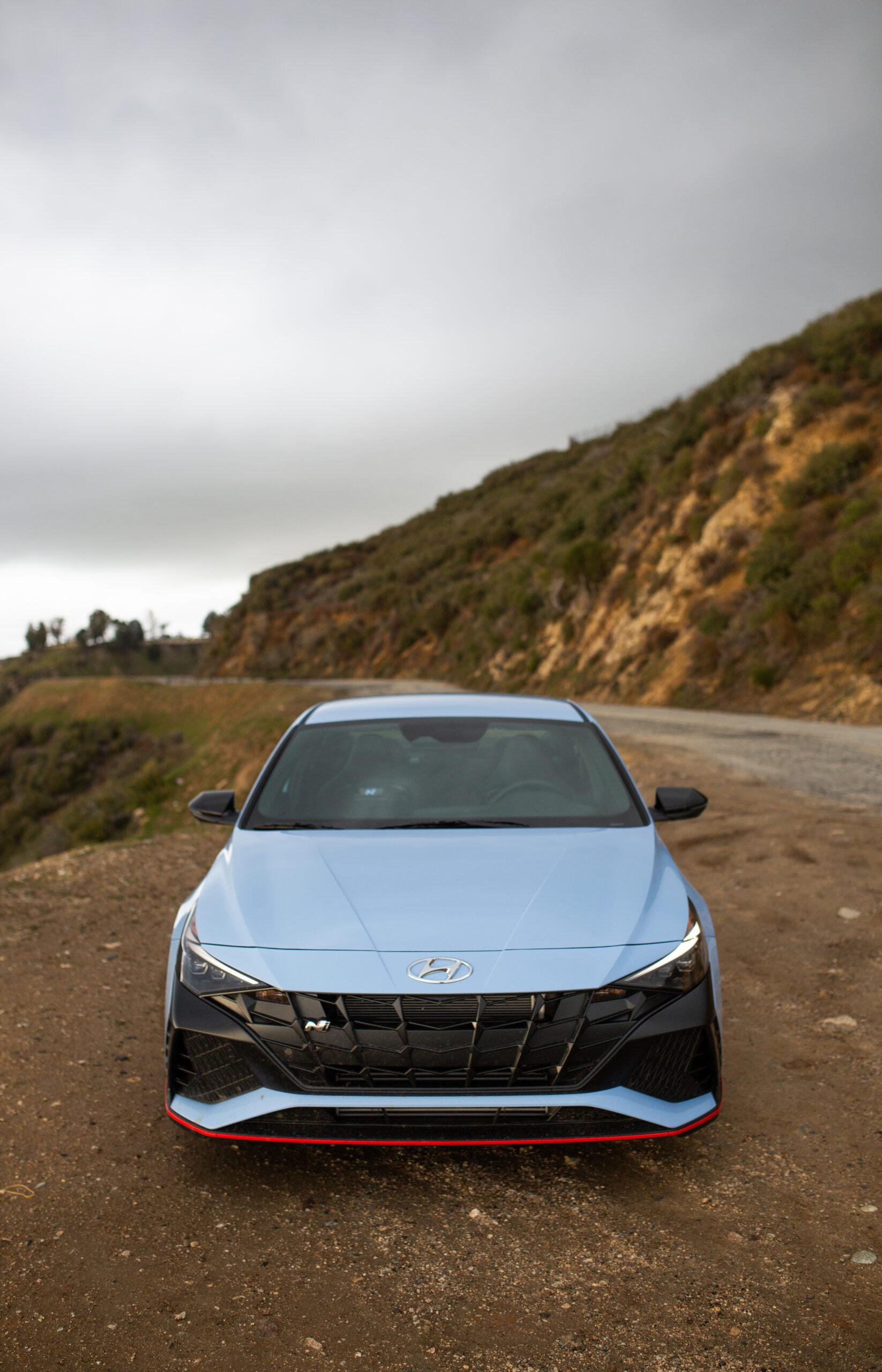
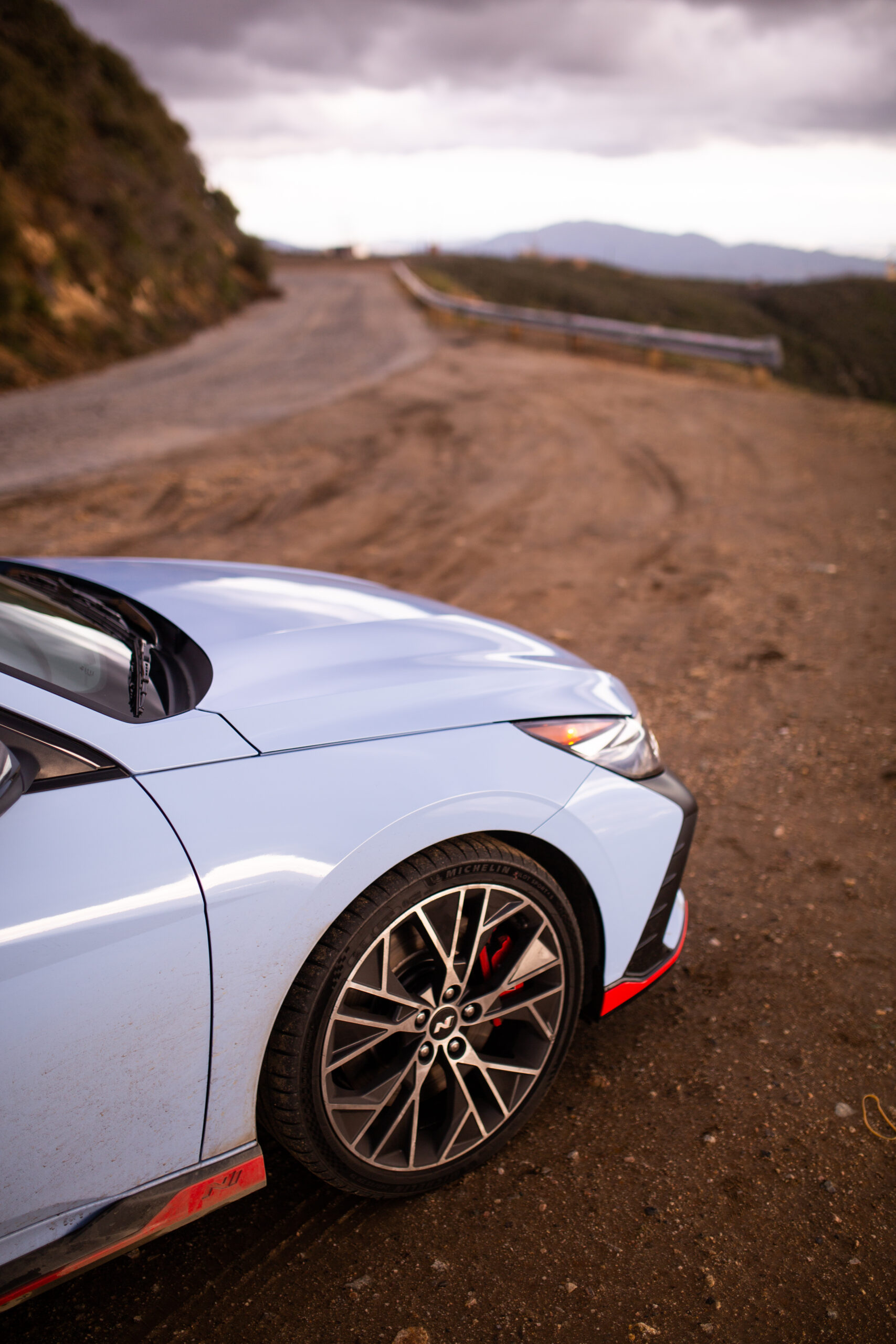
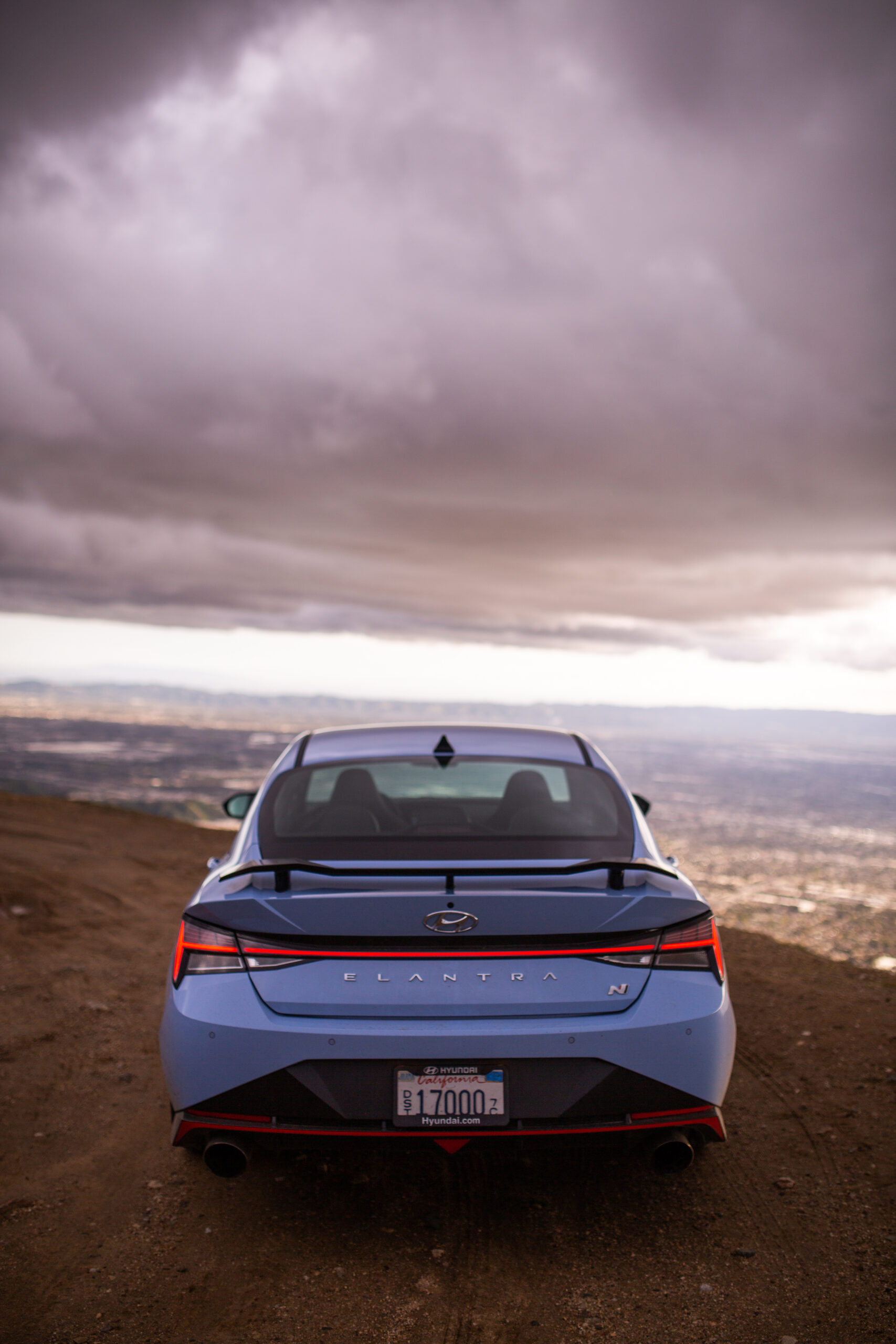
2023 Hyundai Elantra N Specs
- Base price (as tested): $34,015 ($34,415)
- Powertrain: 2.0-liter turbocharged inline-four | 6-speed manual transmission | front-wheel drive
- Horsepower: 276
- Torque: 289 lb-ft @ 2,100 to 4,700 rpm
- Seating capacity: 5
- Curb weight: 3,186 pounds
- EPA estimated fuel economy: 22 mpg city | 31 highway | 25 combined
- Quick take: The affordable, driving feel-focused performance car we all needed.
- Score: 9.5/10
The Basics
As Reviews Editor Chris Tsui so astutely pointed out, the nameplate Elantra inspires nothing in the imaginations of car enthusiasts. The word Elantra could not be farther from anything fast, fun, or interesting. Yet it’s the honorific N at the end that makes all the difference. That letter stands for Namyang, Hyundai’s global research and development center, or Nürburgring, that silly German toll road in the Eifel mountains.
N is a young brand, one that hasn’t yet had a chance to build up the legend that’s attached to the Type Rs, GTIs, and STIs of the world. Thus far, it’s had three products in the U.S.: the utterly brilliant to drive but terrible to live with Veloster N, the burble-tune’d Kona N compact SUV, and this Elantra N, based on the Hyundai’s ever-so decent compact sedan. And because of this, it has something to prove. It has to go above and beyond to lure people away from The Others.


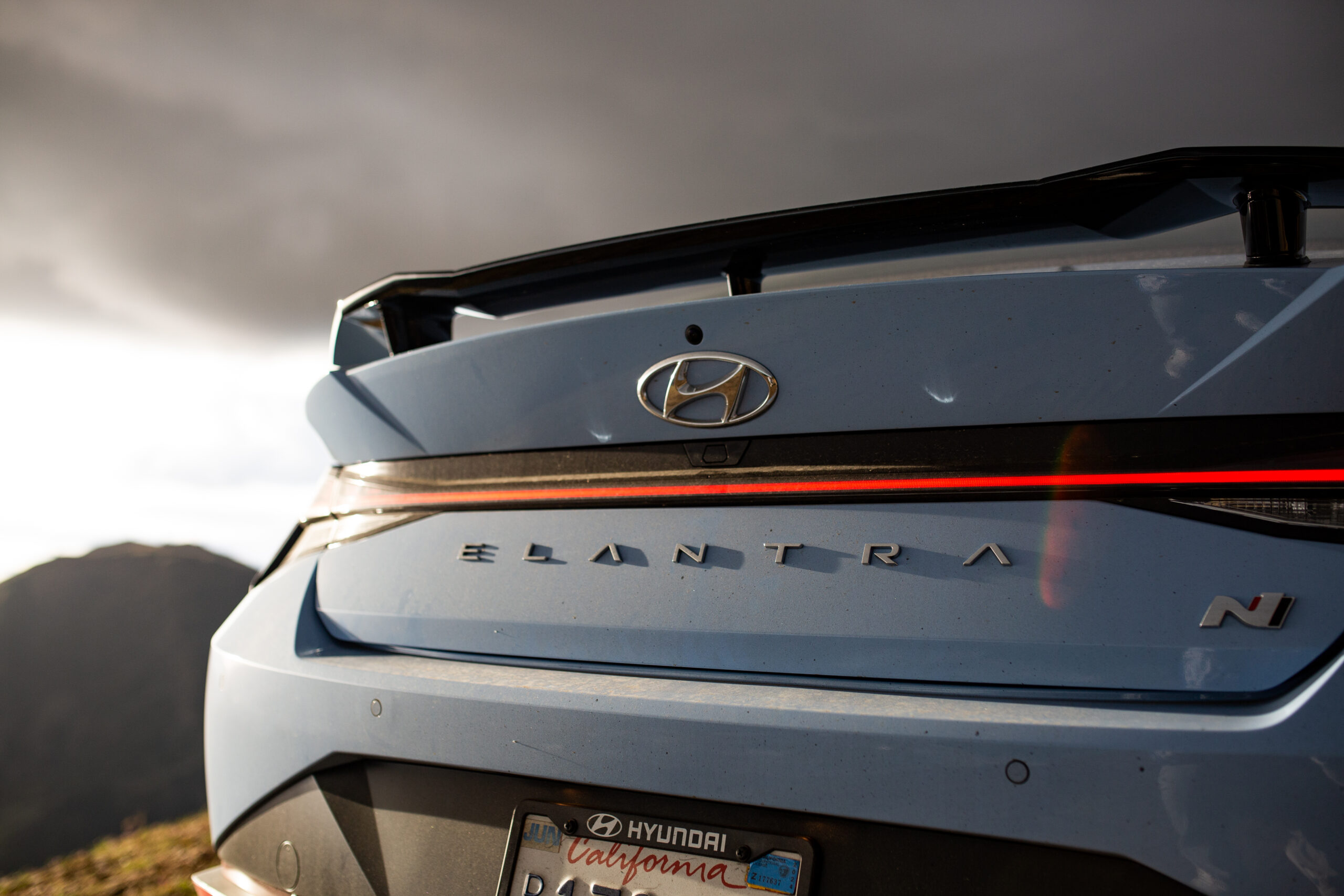
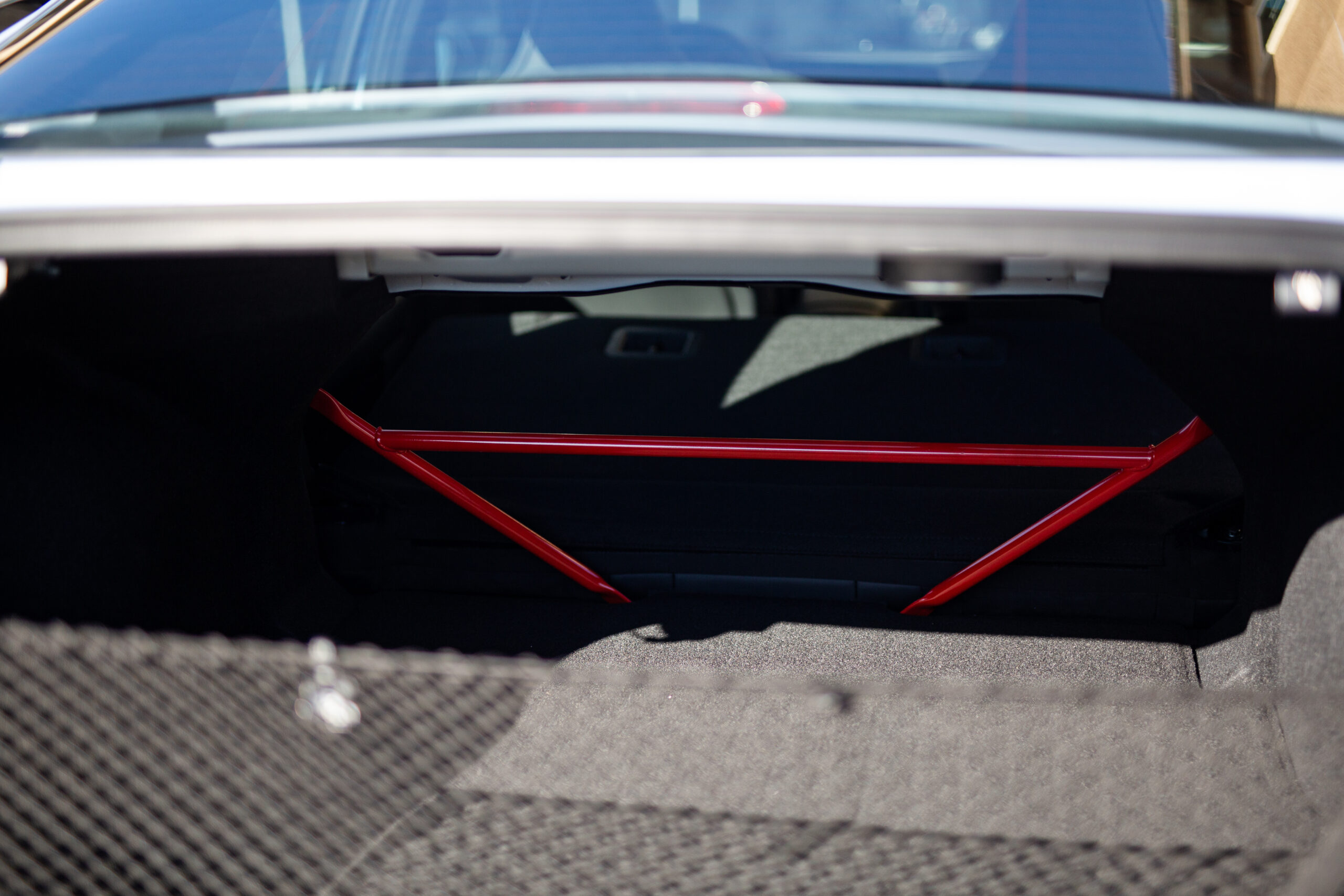
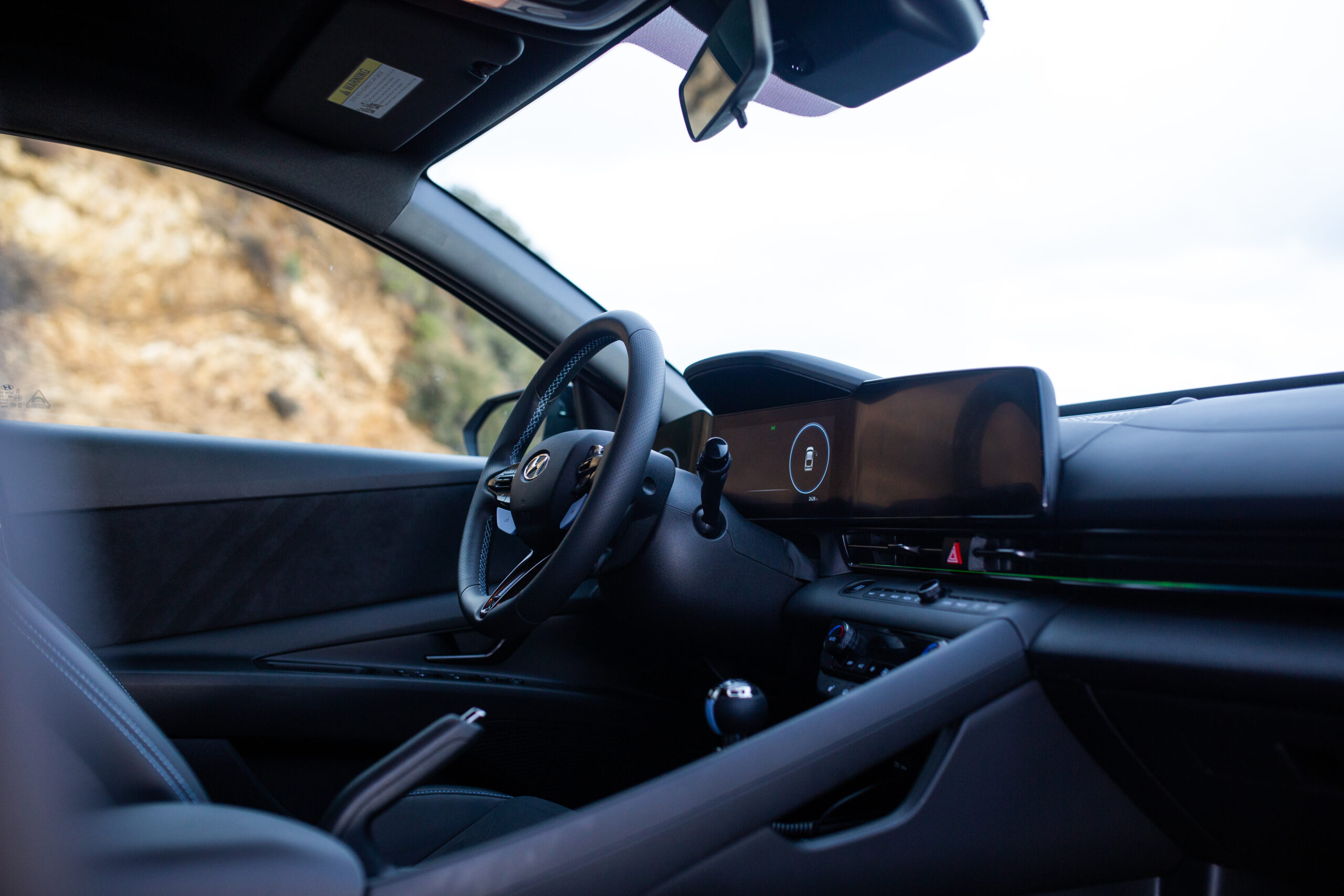
In the pursuit of performance, almost no expense was spared. It has its own special chassis bracing, bushings, spring rates, and adaptive dampers for its MacPherson strut front and semi-trailing arm rear suspension, a 276-horsepower 2.0-liter turbocharged Theta II engine with a revised turbo, and a full-blown electronically controlled limited-slip differential (something the Civic Type R doesn’t even have) outputting to equal length driveshafts and a trick integrated front axle assembly that helps reduce torque steer by bringing the axle joint closer to the center of the wheel. All of that gets routed through a six-speed manual gearbox.

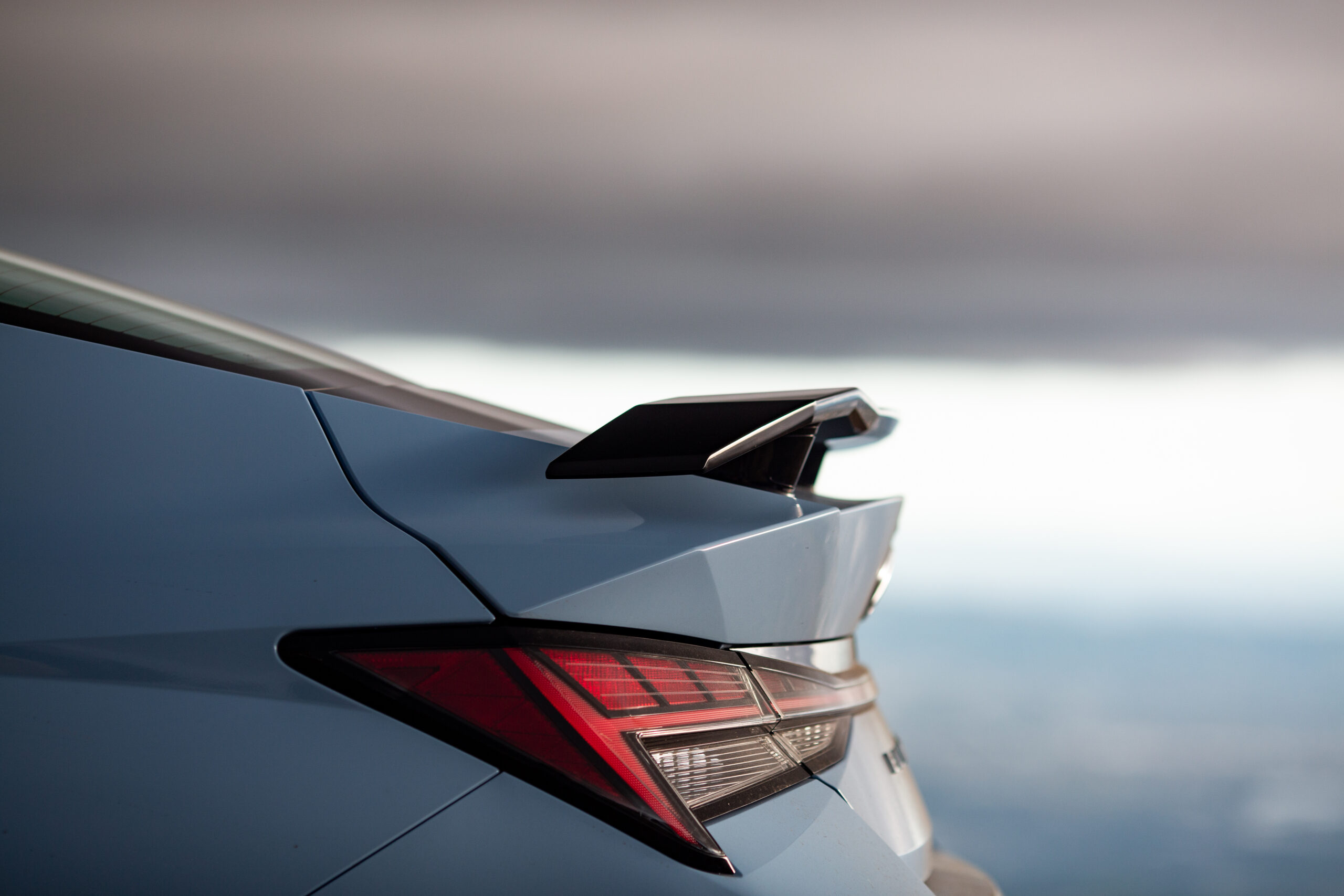
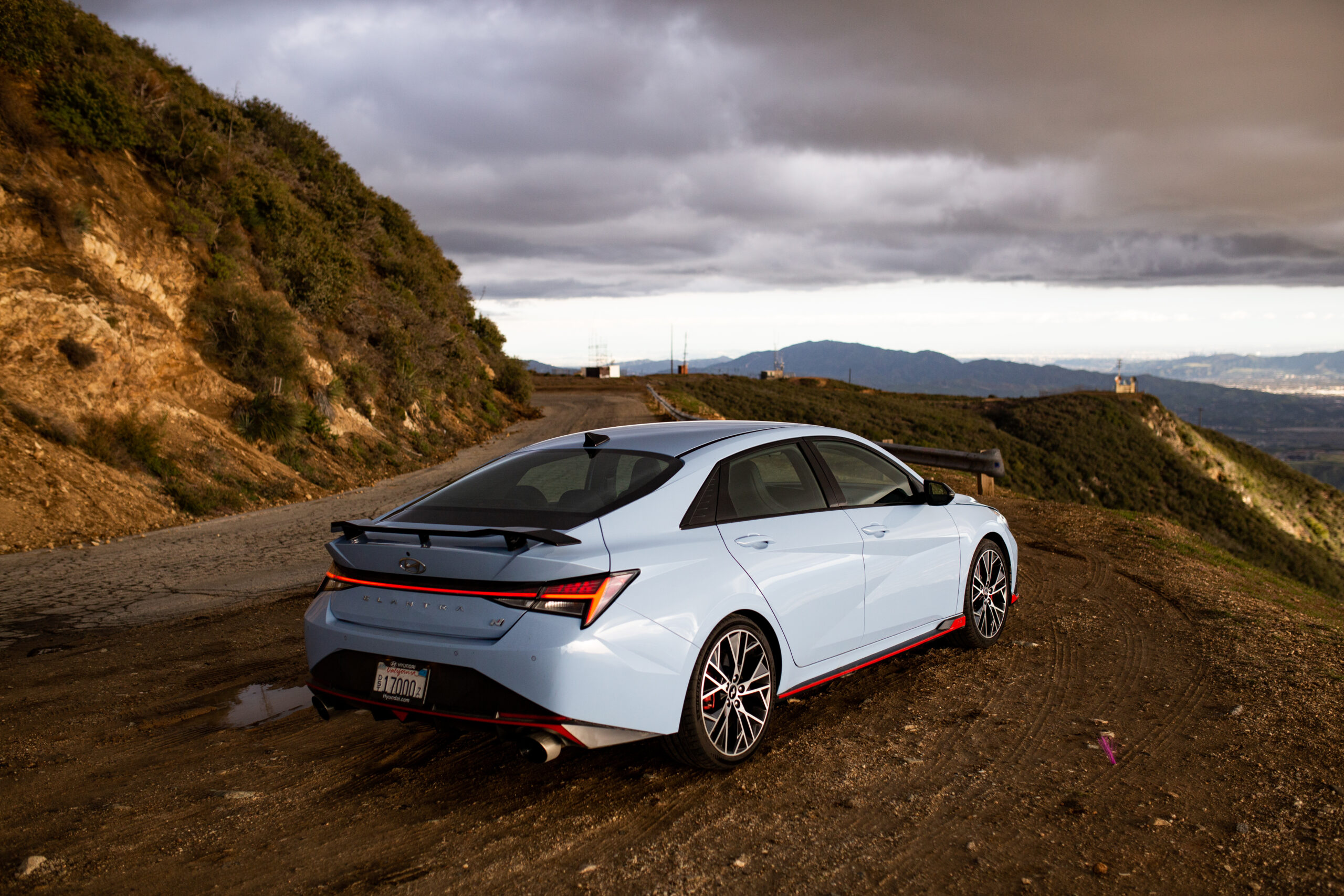
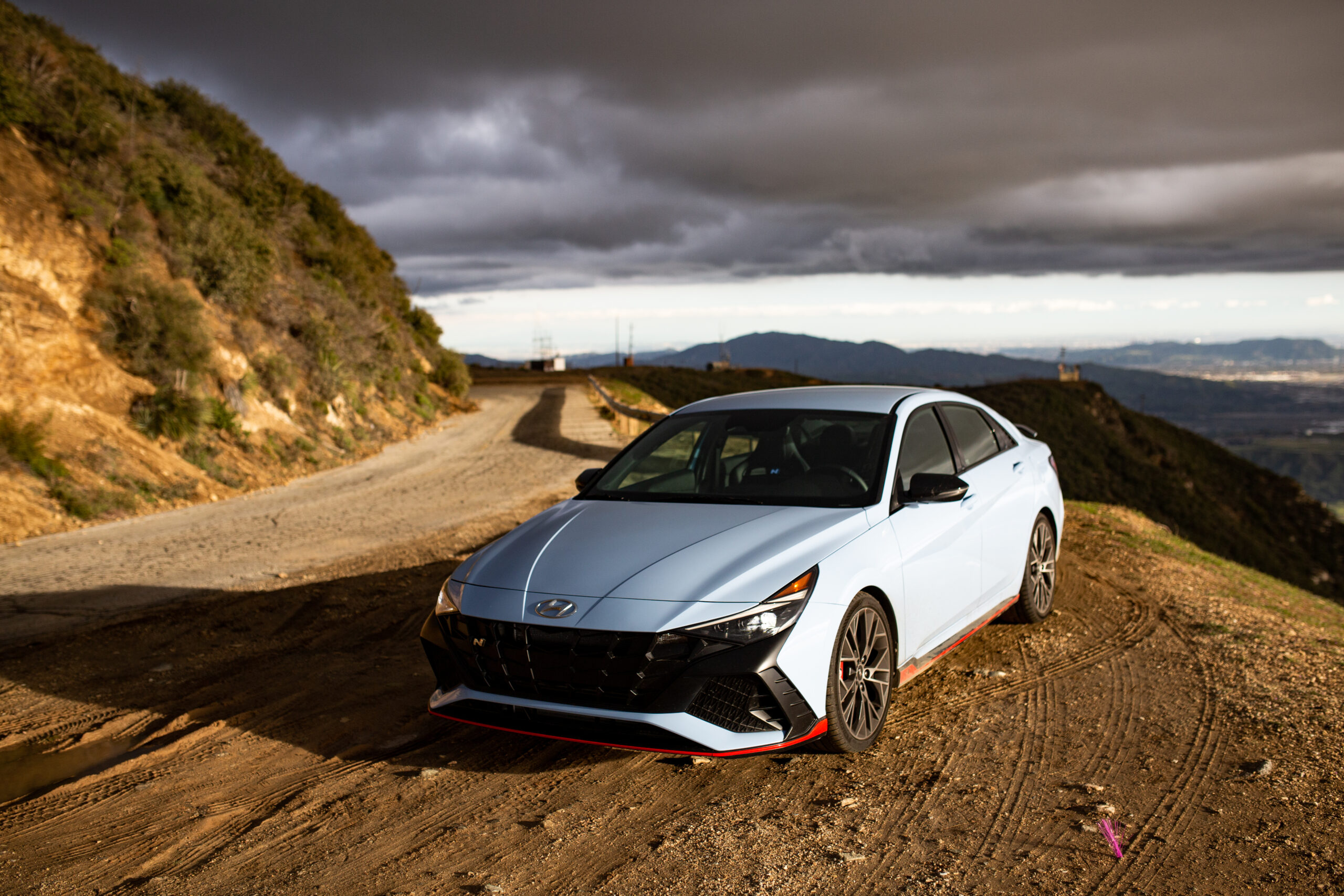
Then there’s the polarizing exterior, which I will now pen an impassioned defense for. Yes, the front is challenging and looks like a black void in most light, but I think it’s unwise to judge the totality of the design based on that. Modern BMWs have beaver teeth, but that also distracts you from how bad the rest of it is. The Elantra N has a balaclava on, but in this case, it distracts from a lot of good. It’s an interesting study in faceting, with lots of flat surfaces all catching light at different times, like a cut gem. The wing is clearly not functional but extremely cool, and the faceting on the side of the car is maximally applied. It might not appeal to most, but it’s saying something. Don’t be fooled, there is genuinely good design work done here, and every surface, flat or curved, has been paid careful attention.
Inside, the value party continues. Rigid, firmly bolstered, and heated bucket seats unique to N cars look as good as real-deal racing buckets with a low driving position that forces you into rapt classroom-esque attention. Two 10.25-inch widescreen displays are arranged in front of the driver; one for the gauge cluster and one for infotainment, both are impressively crisp and have high refresh rates. The eight speakers are branded Bose and sound decent enough but not exceptional while navigation and wireless Apple CarPlay are standard. Interior build quality admittedly could be improved as there were some creaks and flexibility in places that I didn’t expect such as the enticingly large grab handle on the center console.
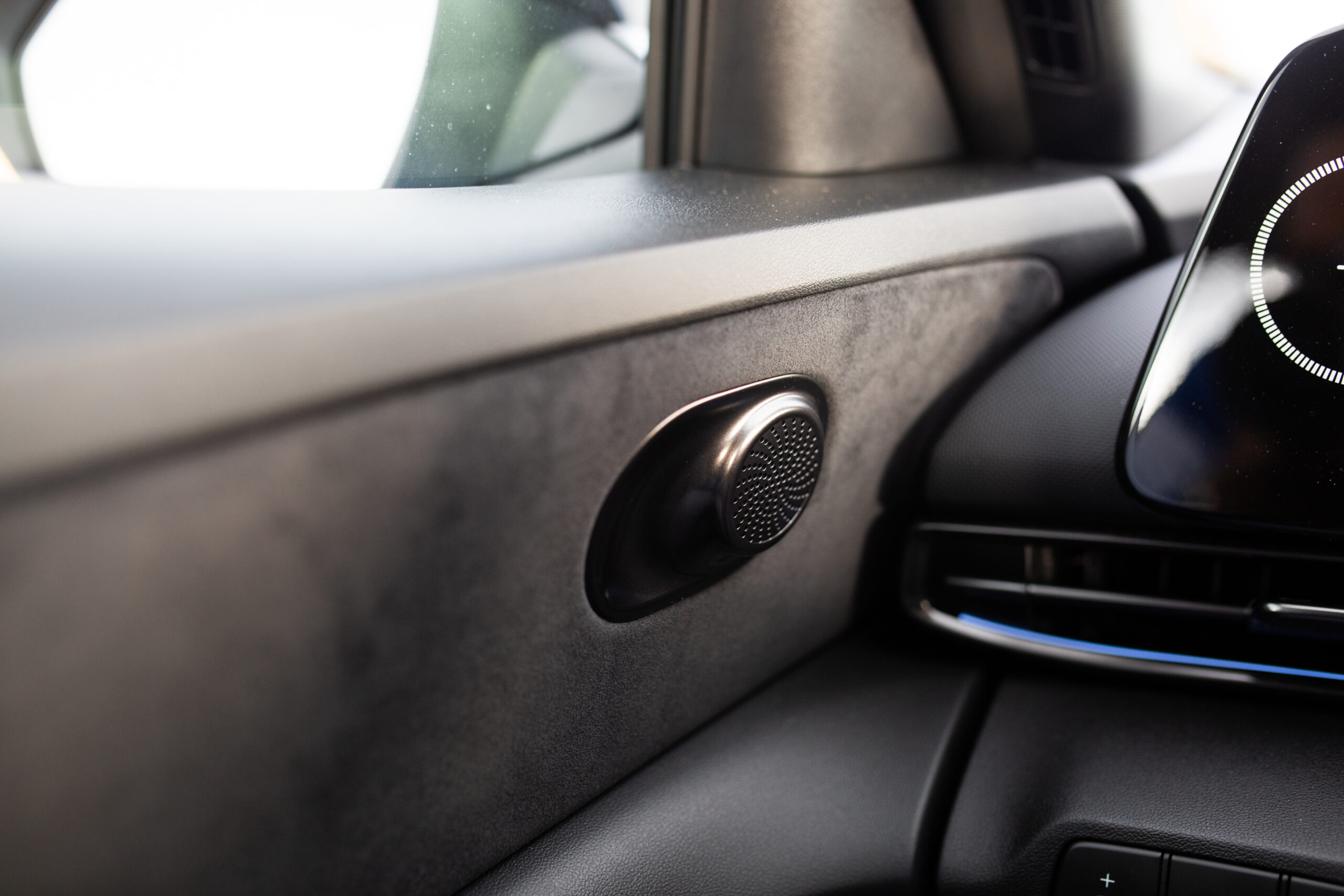

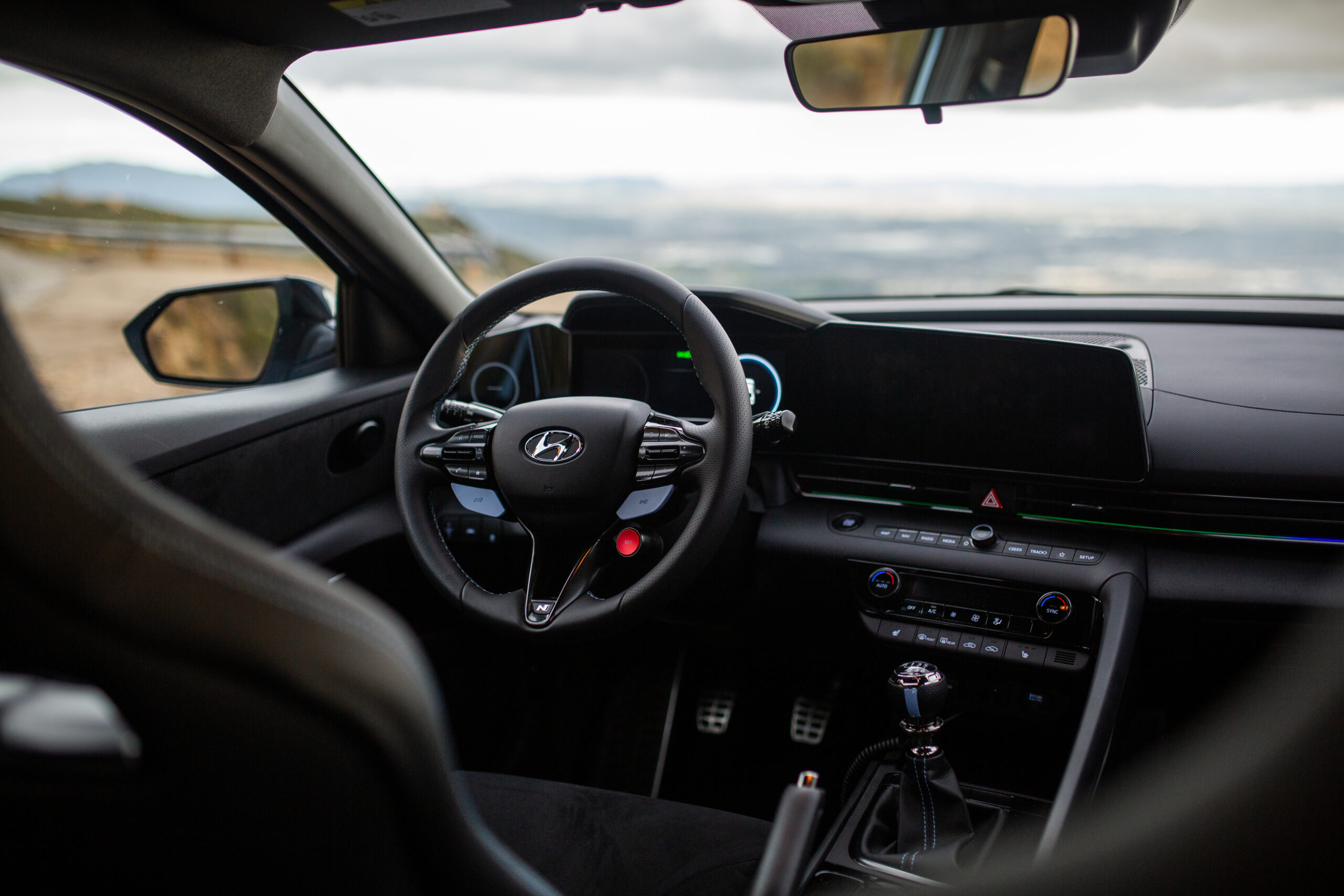
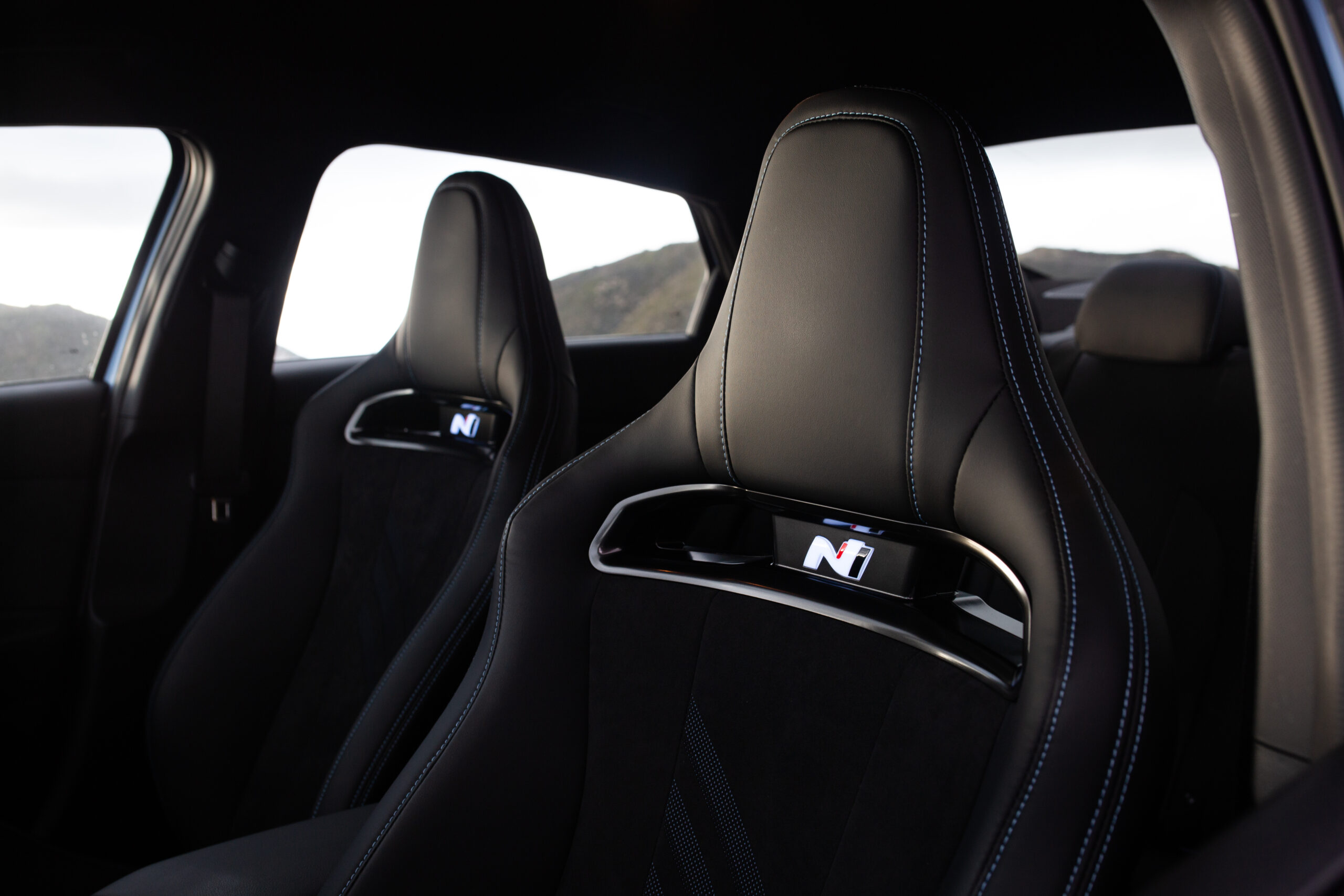
However, it’s offset by neat performance car design details dotted throughout the cabin. The three stripes in the Alcantara section of the door cards are made of tiny perforations. My favorite detail work is in the covers for the tweeters, which have a nice mix of concavity and convexity, along with pattern work that does a lot with fairly little real estate. And the N logos on the seats light up. It’s all very cool.
Driving the Hyundai Elantra N
Truthfully speaking, good parts don’t mean shit without good tuning. It’s easy to throw hardware at a problem, but doing the difficult work of developing, nay, honing a driving experience takes not only engineering skill but also a high-resolution idea of what an engaging driving experience is. Engagement is not grip or horsepower. Engagement is everything in between you and the pavement, and how the car communicates that information.
The Elantra N is a masterclass in driver engagement. It understands what a car should feel like, regardless of drive configuration, badge, or price. It is one of the most stunning examples of suspension and steering calibration in any car on sale today.
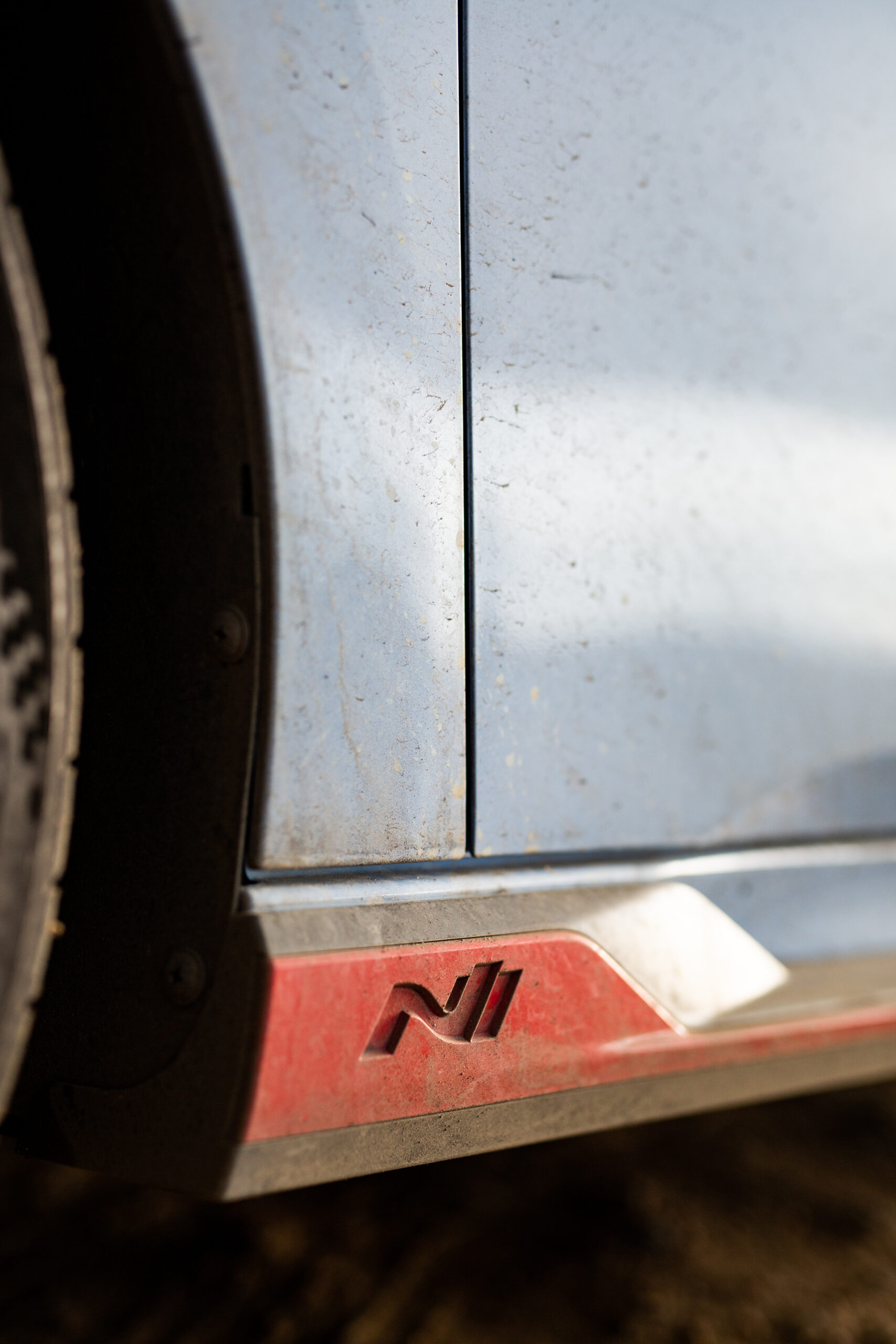

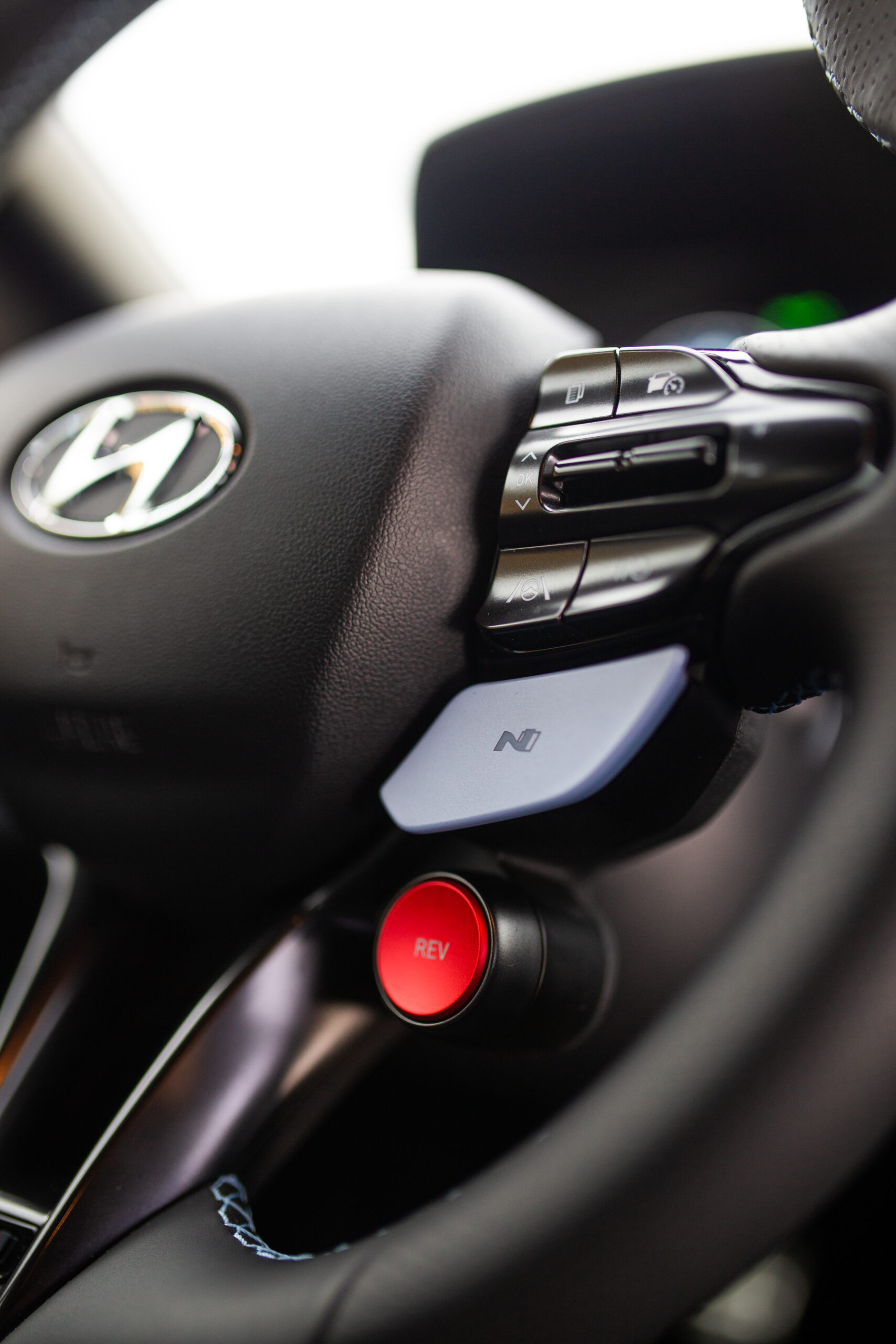
Feeling out the adaptive dampers on the few bumpy Southern California canyons that were open after our personal rainstorm apocalypse left me wondering why nobody else could quite nail the range and tuning that the team at N did. Comfort mode is supple but not uncontrolled, with only the stiff bushings betraying the soft ride when it came to harsh, sharp road imperfections. It straddled the fine border on underdamped but was still extremely usable on bumpy canyon roads and never felt floaty, with the car maximizing its available rear suspension travel to steady the car. It’s soft and pitchable for the driver who prefers a rally car vibe over a track car vibe.
Normal mode worked beautifully on aggressively bumpy and undulating canyons, allowing the Elantra to dispatch yumps and camber changes with little drama but with a bit more communication to the coccyx. Then, the full-blown stiff damper N mode became a wonderful stream of communication, with plenty of compression damping supporting the car and allowing the road to speak through the seat while still allowing the car to breathe and work on bumpy surfaces. But the real trick was in the slight forward bias of rebound damping, allowing the rear to rise under braking, dance around benignly, and place the car squarely on the nose, letting me pivot the car on the brakes at all speeds. Not just the limit.
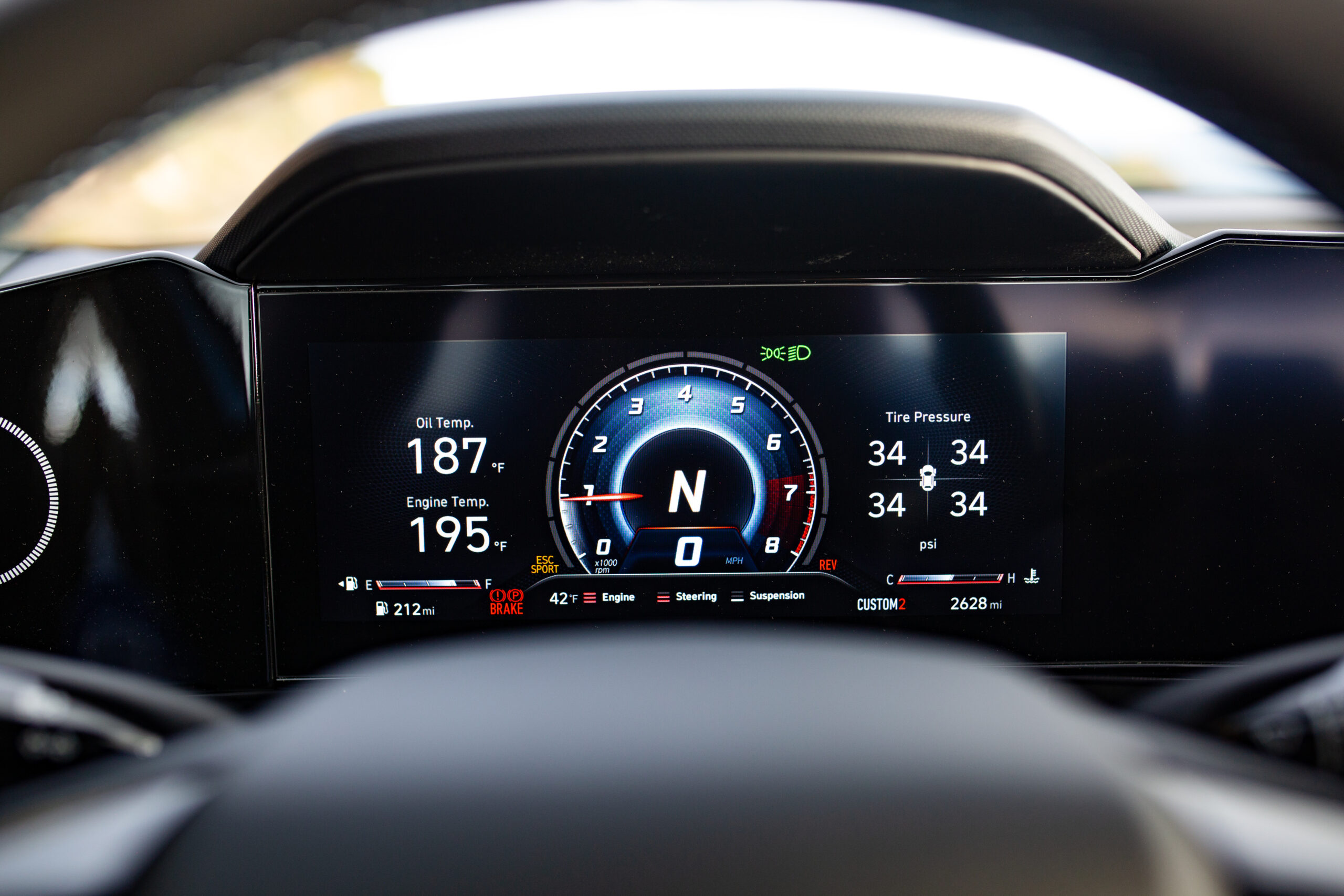
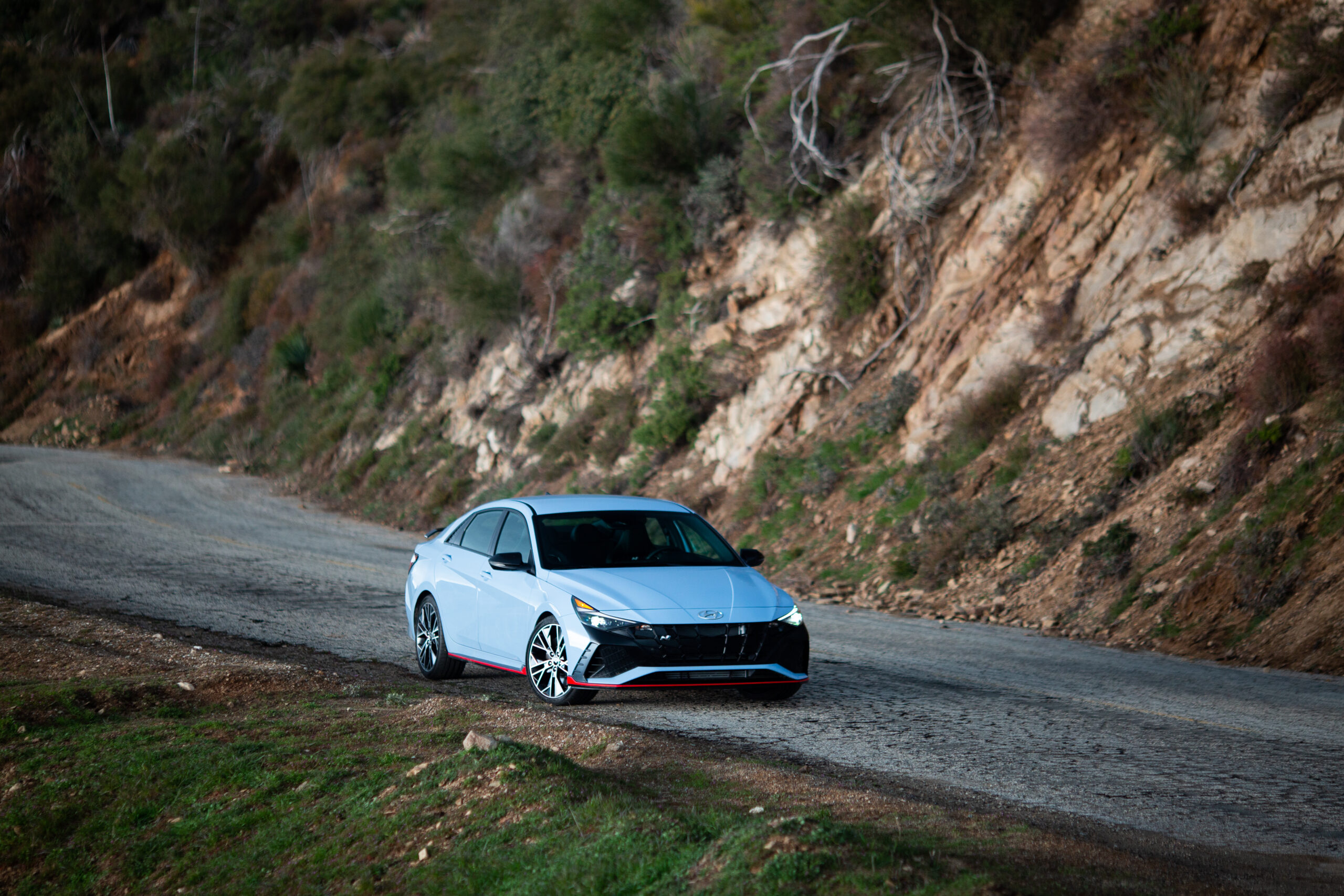
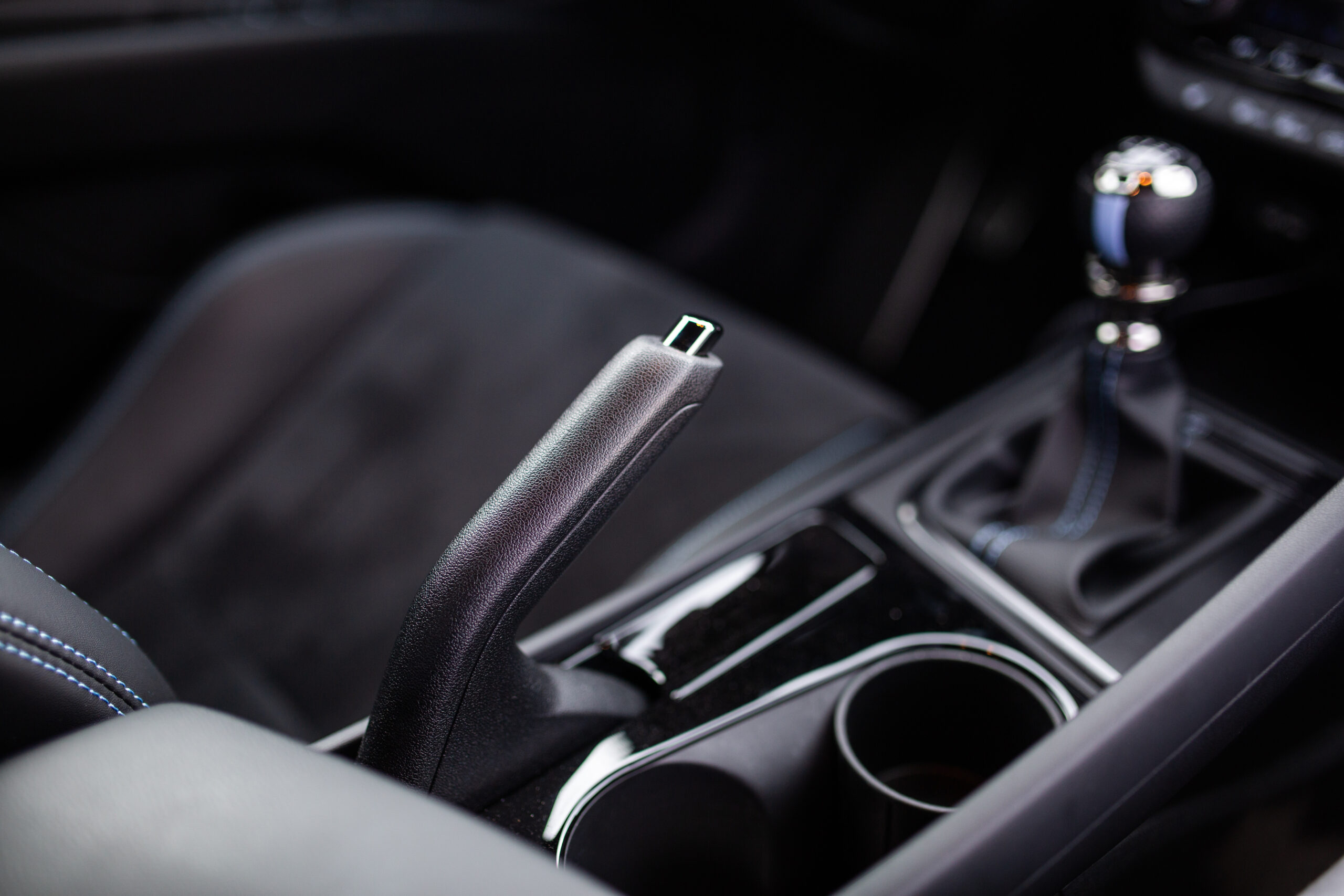
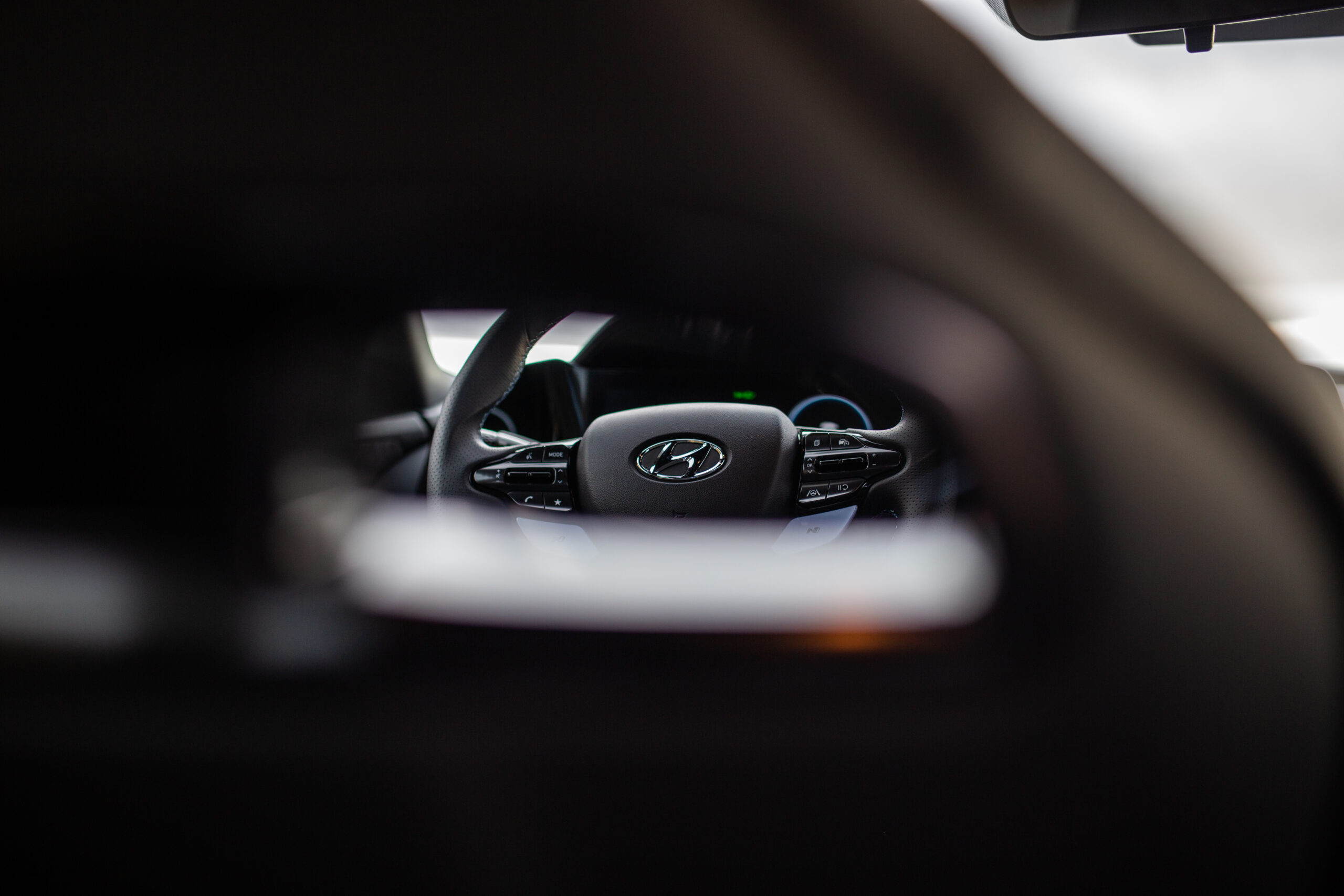
Feeding that frenzy of information to my hands is steering that has made me doubt everything that’s ever been said about electronic power steering. Of its three weight settings, the middle Sport setting is what all steering should be: a sledgehammer of on-center weight with effort building up linearly, only lightening if I drove the front tires past their grip limits, sending a bolt of electricity from my hands to my brain that is equal parts focus, information, and strong dopamine.
That, combined with an extraordinarily quick ratio means most cornering is done within 90 degrees of center, flowing with information about how much grip is left in each 245 mm-wide, N-specific Michelin Pilot Sport 4S. It is heavy, as performance car steering should be, but most importantly, it’s insanely direct without feeling artificial. Also, you can lighten it up significantly via drive modes if so desired.
Road texture through the steering is less present than in the defunct Veloster N, but it retains every single bit of the confidence and weighting of that lighter, shorter hatchback. Once it’s all put together, the Elantra N reaches cornering perfection as I know it: initial rotation on turn-in that stands the car on the nose, settling into a mid-corner carve that felt less like “steering” and more like gently guiding the car as it makes its own way around a corner.

This is where front-wheel drive works to enhance the Elantra, making it another sterling example of how all-wheel drive can be wasteful. Tuned like a touring car, the Elantra N rotates extremely nicely on turn-in while mid-corner lift-offs result in some pretty aggressive slides. Hyundai has blessed this car with a seemingly limitless front end and a loose rear, essentially making the Elantra N less stable in the name of nutty agility. The electronic limited-slip differential makes power delivery completely seamless with nearly zero wheelspin, and its ability to act as an open differential off-throttle contributes massively to the immediate turn-in and lift-off oversteer character of the car, something most mechanical limited-slips cannot do.
Perhaps the least impressive thing about the Elantra N is the engine and gearbox. Though vibrations are impressively nonexistent from the engine, there’s this sense that the engine is slightly held back, which is almost surely down to clever torque management that helps keep torque steer and wheelspin at bay. Sometimes, the turbo would light up and freight train to redline with what felt like all 276 hp. Other times, it felt as though the car would overshoot its boost target and pull back just as the turbo got up to speed.
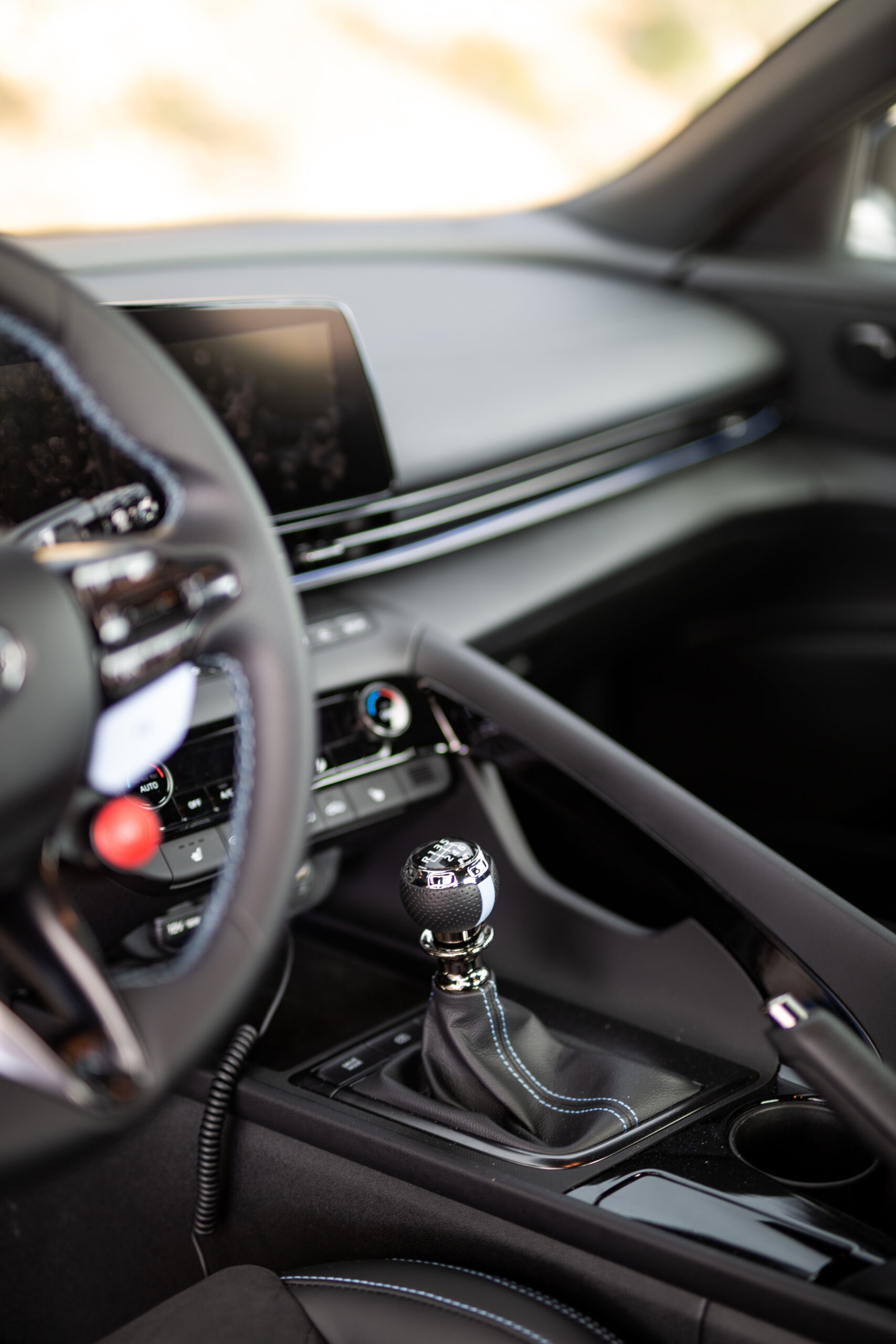
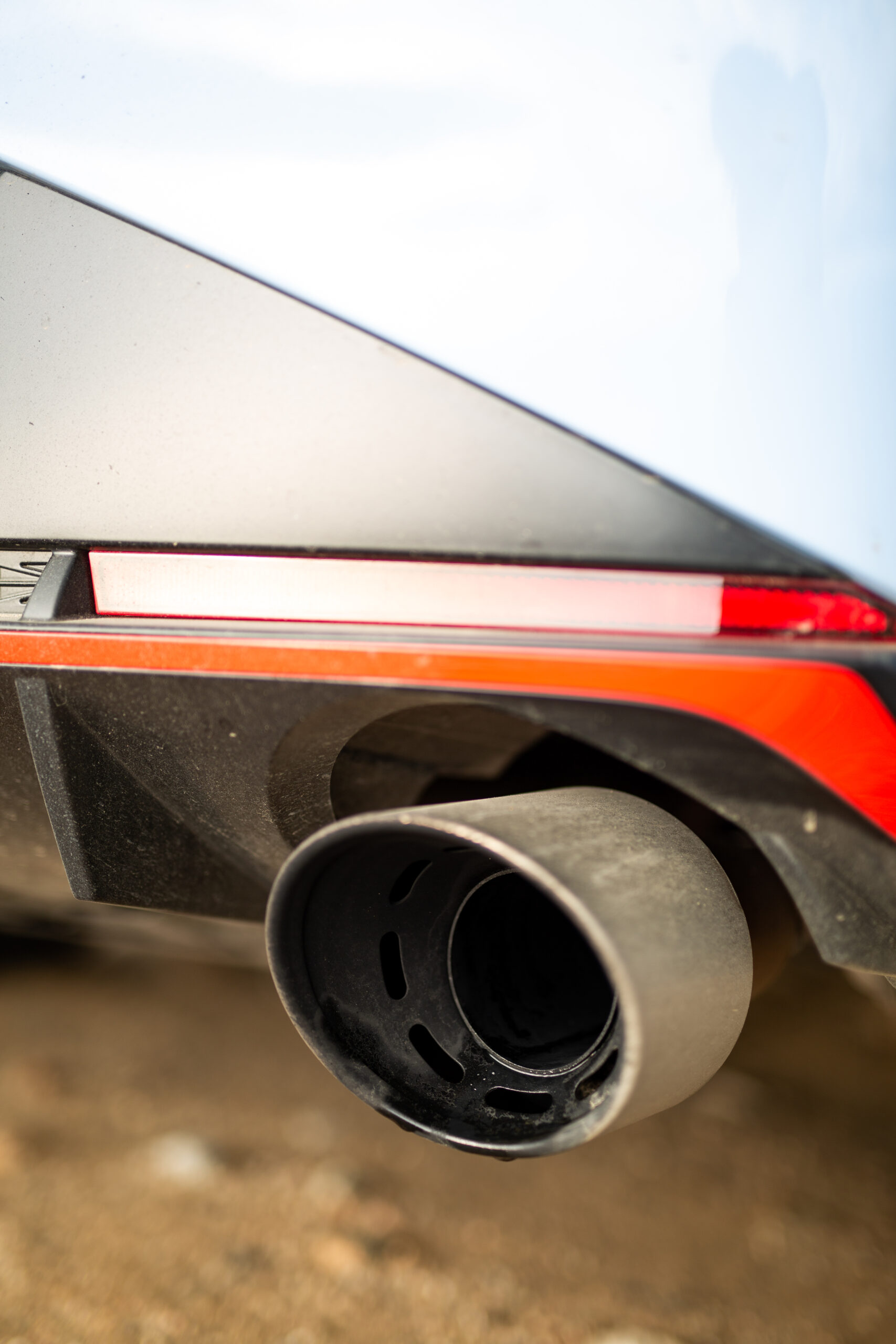

Interacting with the engine through the manual gearbox is quite nice but probably the Elantra’s weakest point. Throws are medium-length and medium-weight with a bit of plastickyness, which doesn’t quite match the lightning-fast and heavy steering. There was also a lot of notchiness and not the good kind. Actuating the clutch pedal is also strange for the first few miles. It’s a medium-weighted clutch with a lot of assist spring, but it grabs low, doing this strange thing where it gets light at the bottom of travel, right around the engagement point. Paired with the light flywheel, it’s responsive and mostly easy to use … after some assimilation.
Despite the good-but-not-great gearbox, it is so much more intuitive to drive than its competitors. Where the Honda Civic Type R beats physics to submission and can almost take the joy out of cornering because it is so competent and serious, the Elantra N lets you feel everything. It lets you make a mistake and have to countersteer a bit. It lets you feel a little afraid. Most importantly, it lets you approach corners in any way you like, not just the way that it likes. It is a driver’s car to its bones.
The Highs and Lows
Straight up: the Elantra N might be the most compelling package in the segment and not just because it is the cheapest. With that world-class handling comes an incredibly usable and interesting interior space, immensely flexible drive mode settings to tailor the experience to what you want, and enough refinement to be used every day.
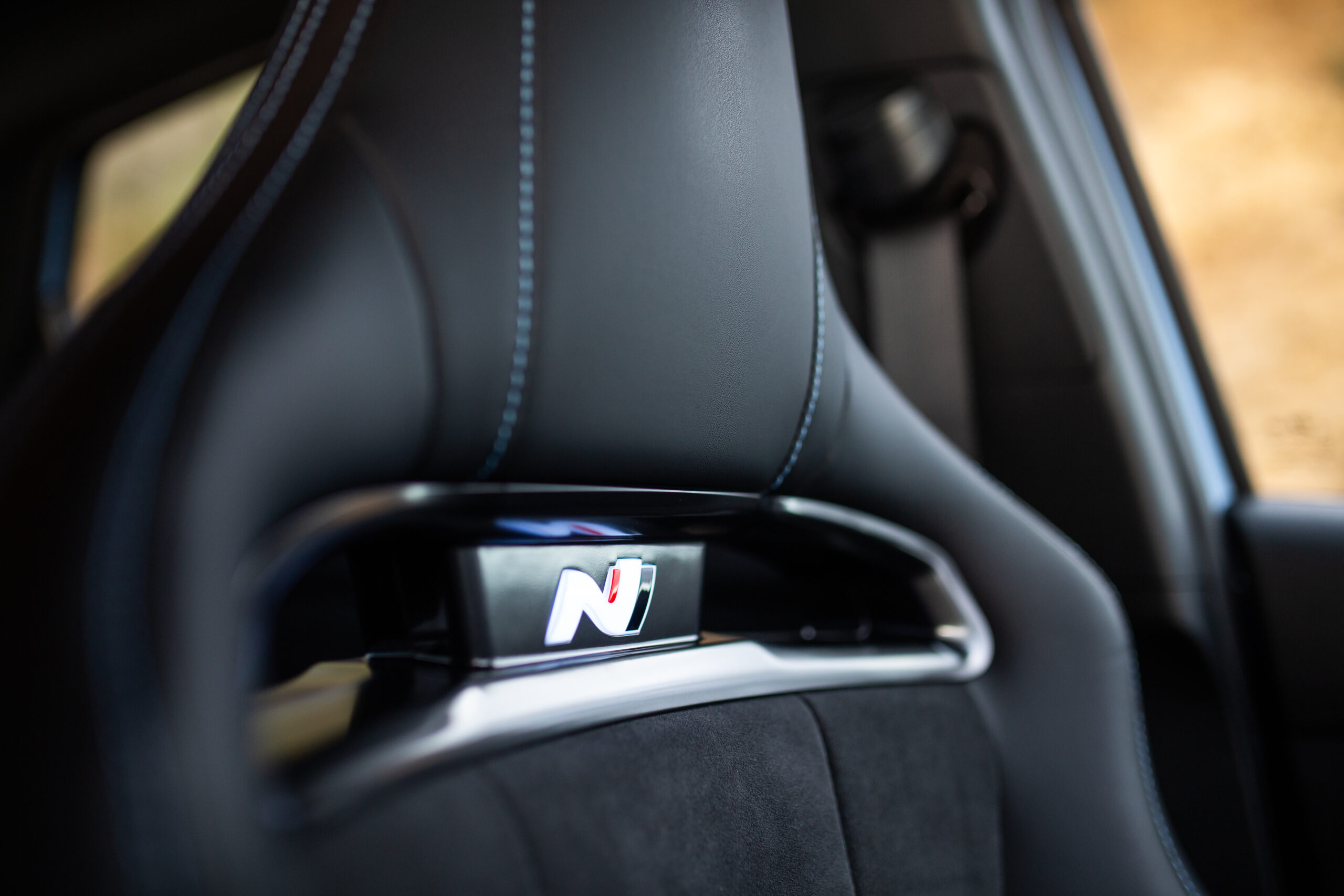
Okay, sure, it can stand to be a bit quieter over imperfect road surfaces and the sound of wind is indeed very audible inside, but it’s all largely on par with other cars in the class and semi-expected in this territory.
Also, the seats are very firm. Good for road-to-butt communication, bad for comfort. Though after a couple hundred miles, either my back went numb or the seats broke in.
Hyundai Elantra N Features, Options, and Competition
There isn’t much to option in the Elantra N. You can spec the eight-speed dual-clutch transmission for $1,500, and two $400 paint colors in the official N shade of Performance Blue or white. Otherwise, the electronic limited-slip diff, adaptive dampers, oversized N brakes, 19-inch wheels with Hyundai-spec Michelins, navigation, and N bucket seats all come standard. It also has the ever-important wireless Apple CarPlay. It does not, however, get adaptive cruise control, which does suck considering it has the camera and forward collision warning but does come standard with blind spot monitoring.
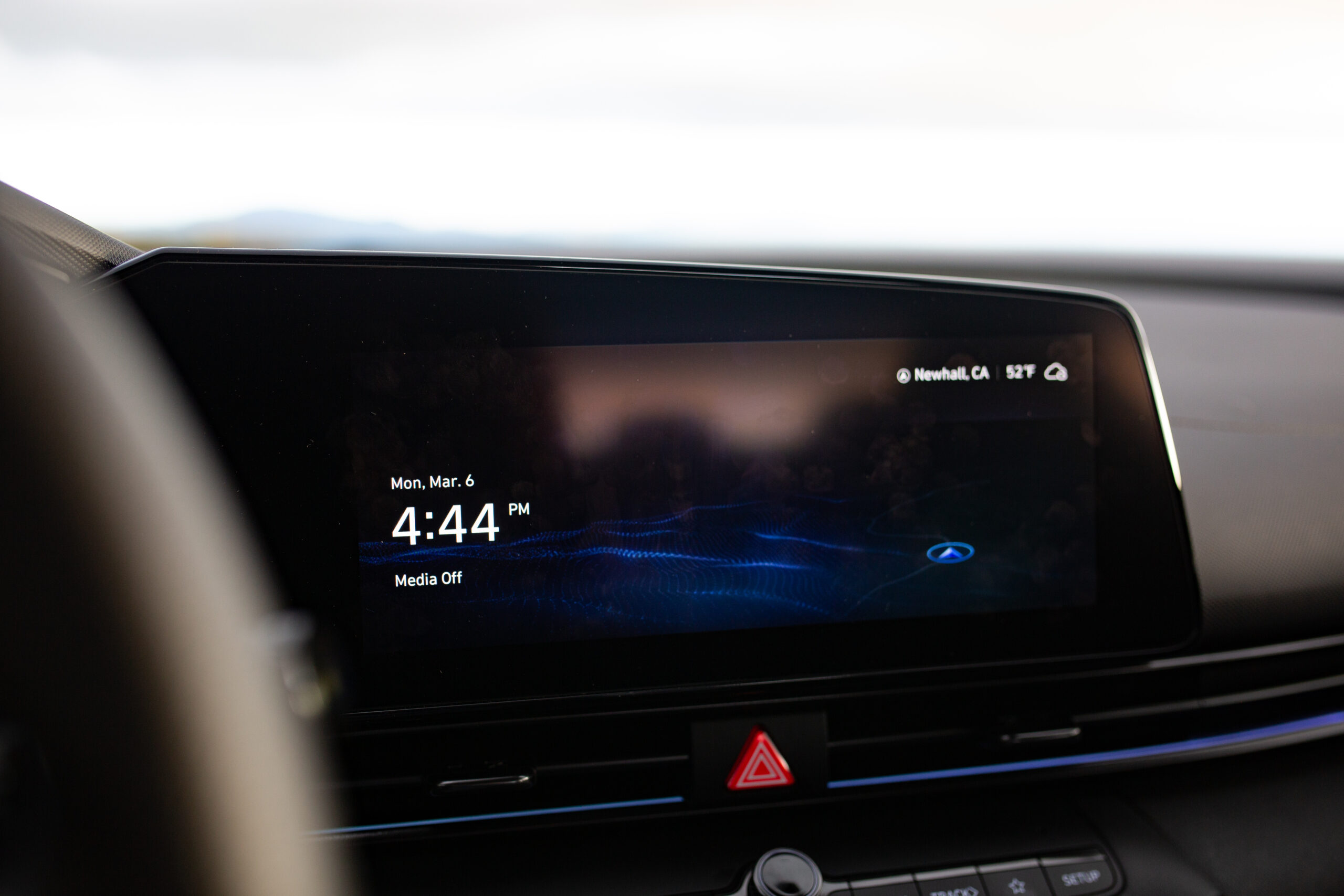
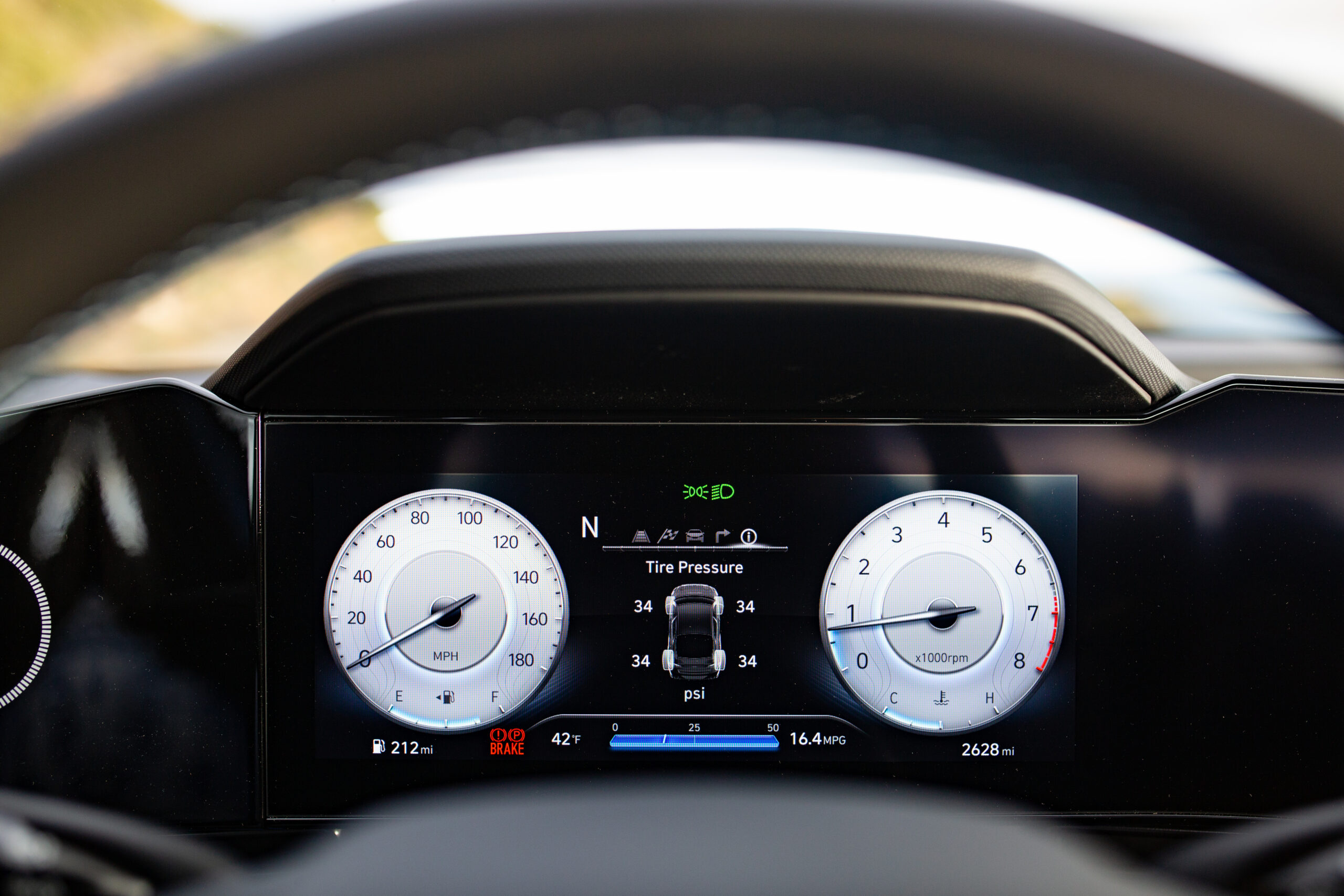

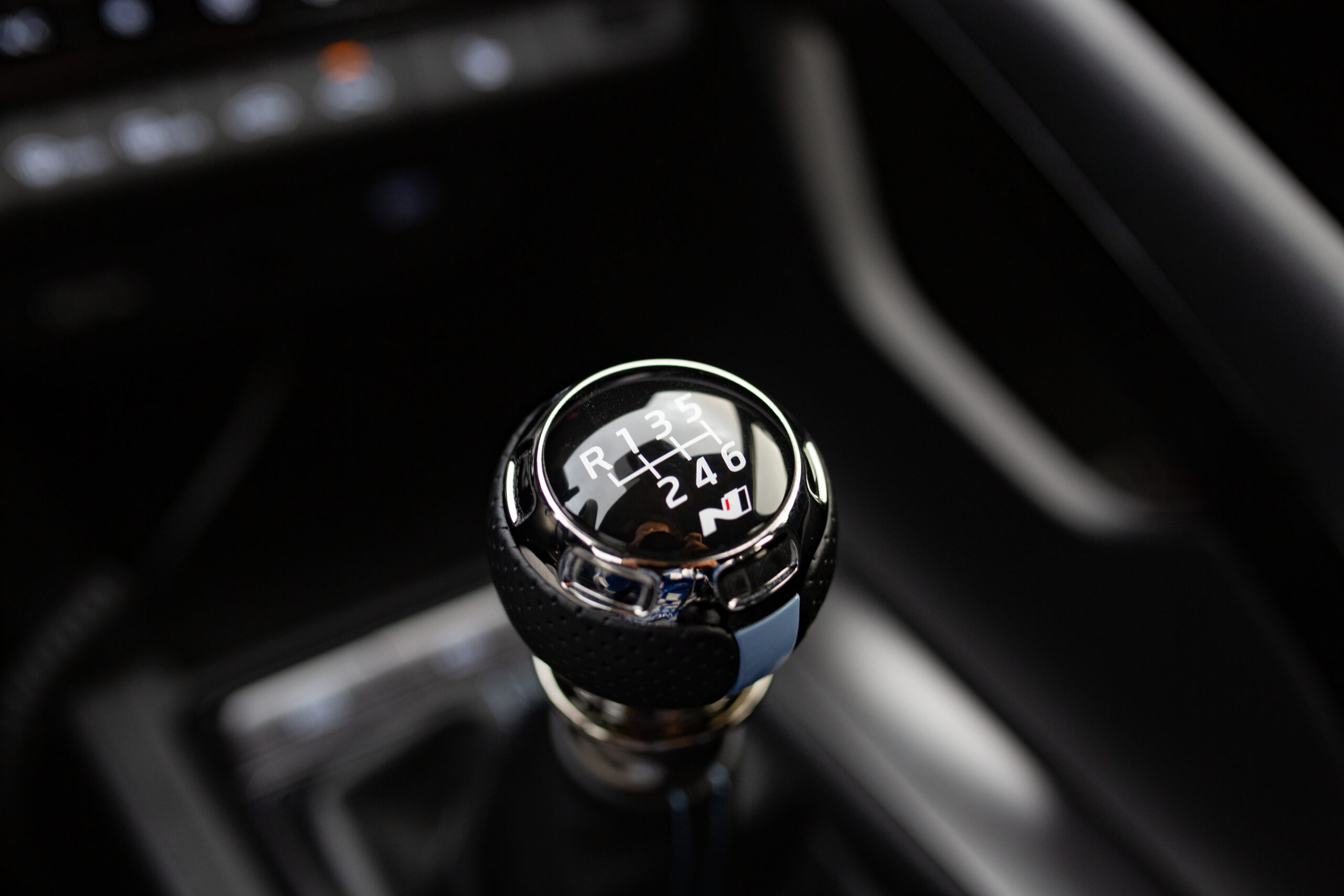
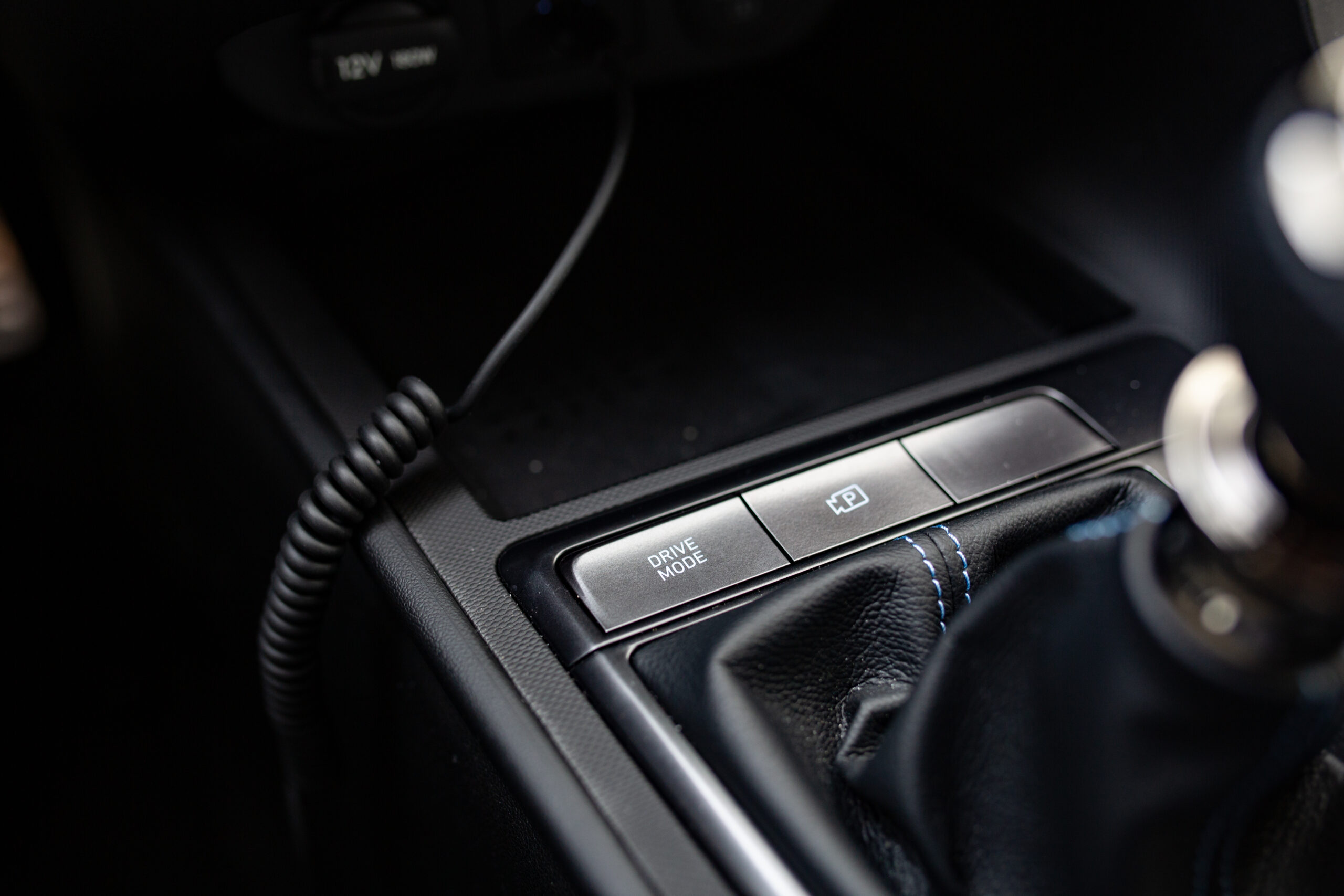
There’s hot competition in the $30,000 to $45,000 practical performance range, but the Elantra N is unique in that it is a conventional four-door sedan rather than a hatchback. Its main competitors are the Honda Civic Type R and Toyota GR Corolla. Yes, the Subaru WRX is also a thing and also a sedan but, frankly, the Elantra N blows that car out of the water for similar money, so its true rivals lie in the Civic and Corolla. The Civic Type R is over $10,000 more expensive, but the GR Corolla starts at $36,995, much closer to the Elantra N’s $33,995 base price.
If you ask me, the Honda is admittedly the technically superior vehicle. It’s more refined, more capable, more complete. Is it $10,000 better than the arguably more charismatic Elantra N, though? Absolutely not. I’ve heard good things about the GR Corolla but have yet to pilot one myself, so I can’t quite speak to whether it justifies its mild price premium over this Hyundai. [Ed. note: It doesn’t. -CT]
Fuel Economy
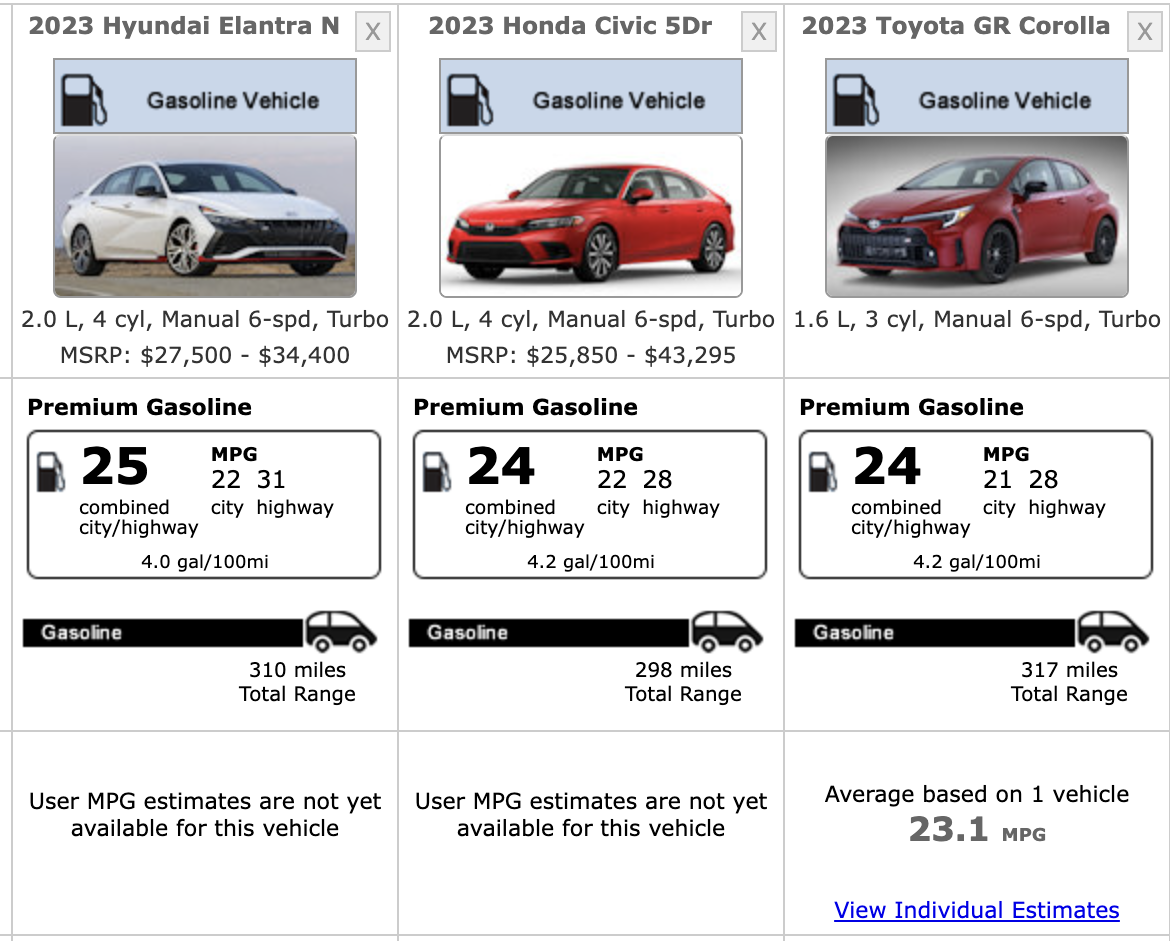
The Hyundai Elantra N is rated for 22 mpg in the city, 31 mpg on the highway, and 25 mpg combined, but during the course of a few hundred miles, I observed about 19 mpg, which isn’t great for a 2.0-liter turbocharged midsize sedan. With a relatively small 12.4-gallon fuel tank, this means range was limited, even with a healthy amount of highway driving. For the daily driver, this could be an issue. Compared to the Type R and GR Corolla, it gets better EPA mileage, but the Type R certainly gets better real-world economy.
Value and Verdict
We are in something of a sport compact car renaissance. After some years of drought, my heart soars when I see folks driving around in a Type R, GR Corolla, or Civic Si, and we’re even seeing the revival of the red-hot and wide-bodied Acura Integra Type S. Things have never looked better, and quality driving experiences are everywhere in this segment. It’s a source of real joy for enthusiasts, and we’re going to look back on now as a real golden era. And somehow, the 2023 Hyundai Elantra N punches right at the top of this stunning group while being the most affordable of them all.
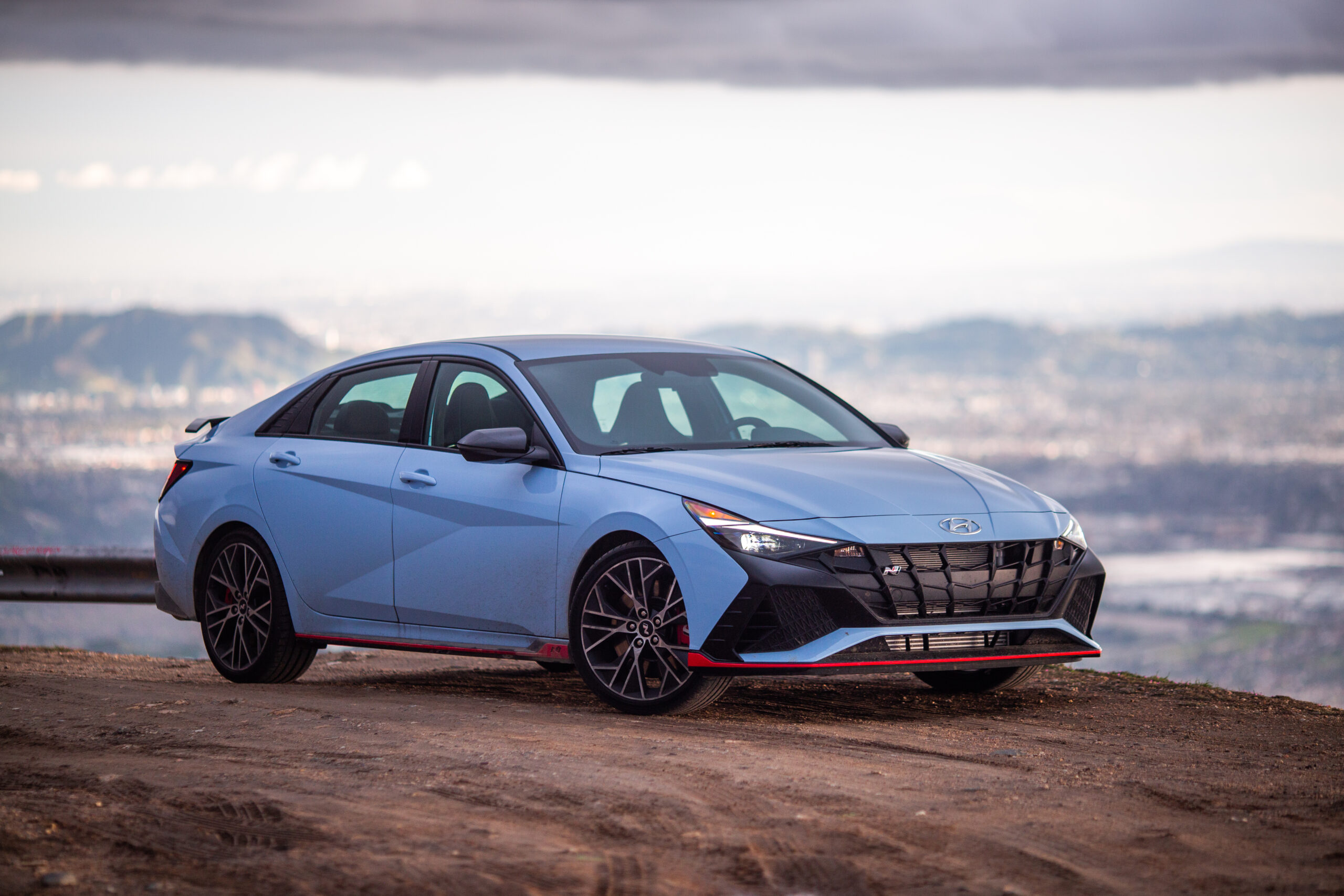
Hyundai, with little pedigree and almost no laurels to rest on, did not rest on the laurels of just making a sporty version of its compact sedan. It went all out. It made one of the best handling cars you can buy at any price but gave it a price that most people can actually afford. That is something to be commended. Best of all, it doesn’t penalize you for not spending a lot of money. It’s just a fairly nice object that anybody could be proud to own, equipped for everything from the school run to track days.
Possibly the best car in its segment, the Hyundai Elantra N is brilliant, period. No qualifiers, no excuses.
Want to talk fast sport compact cars with me? Hit me up at chris.rosales@thedrive.com


